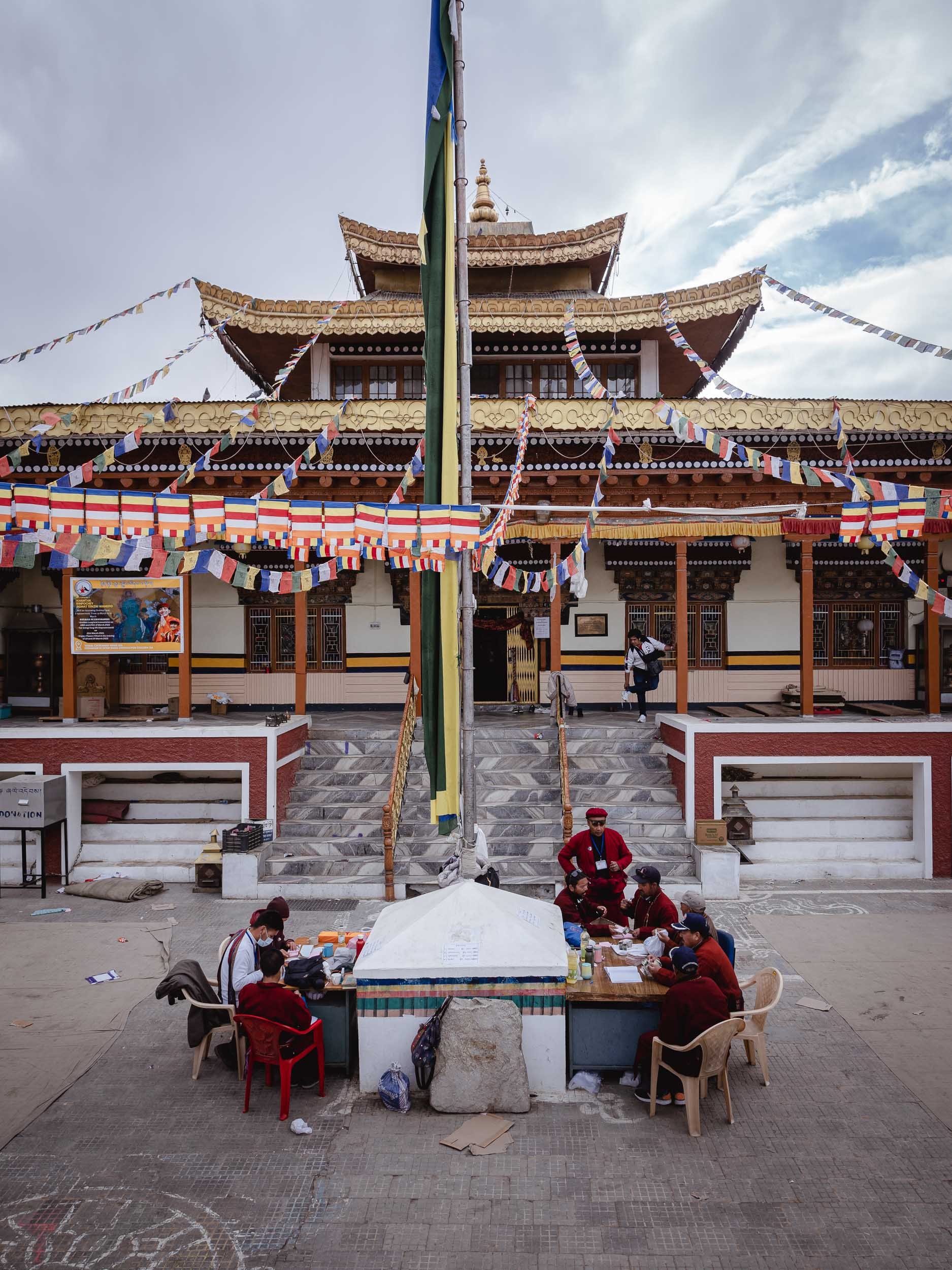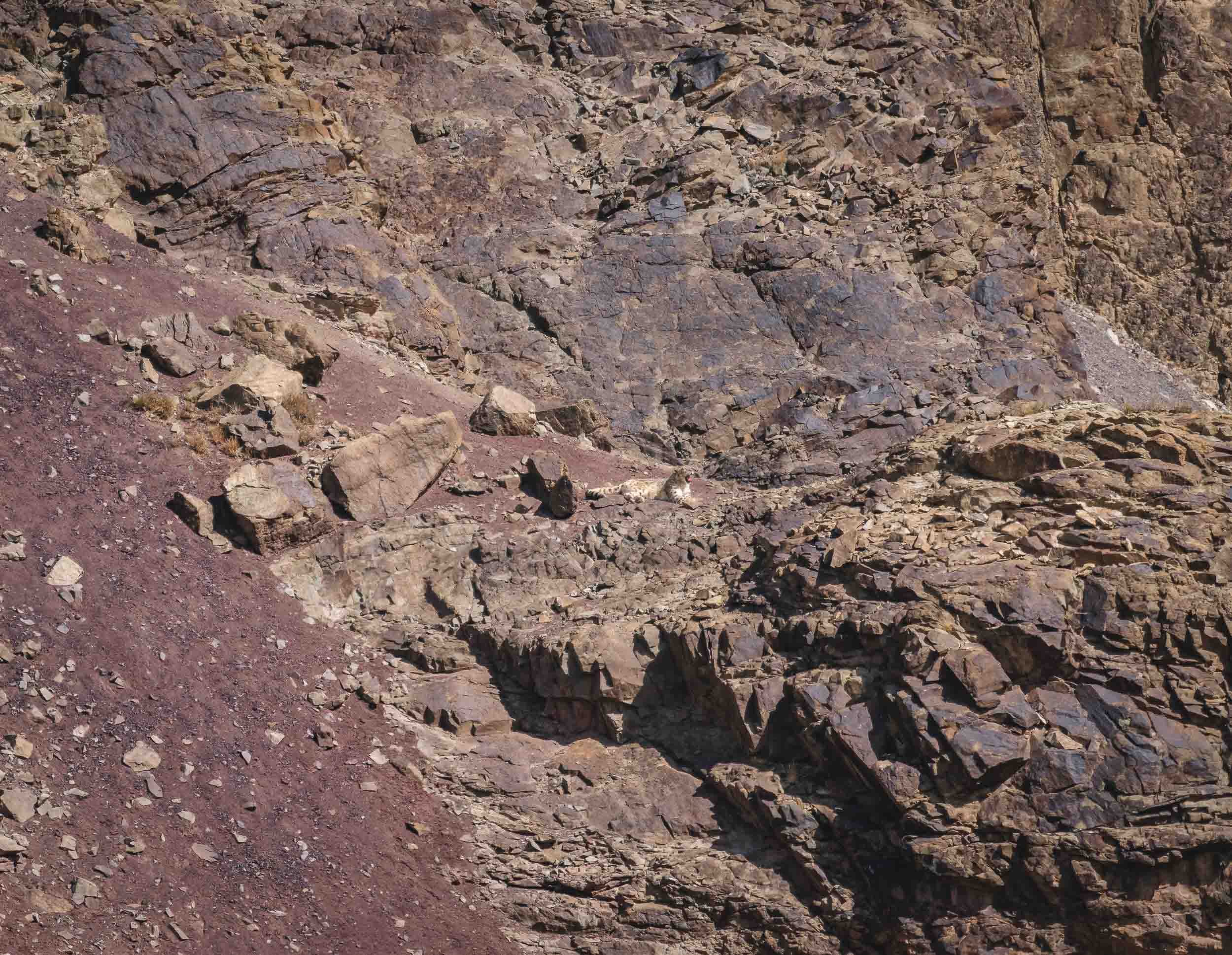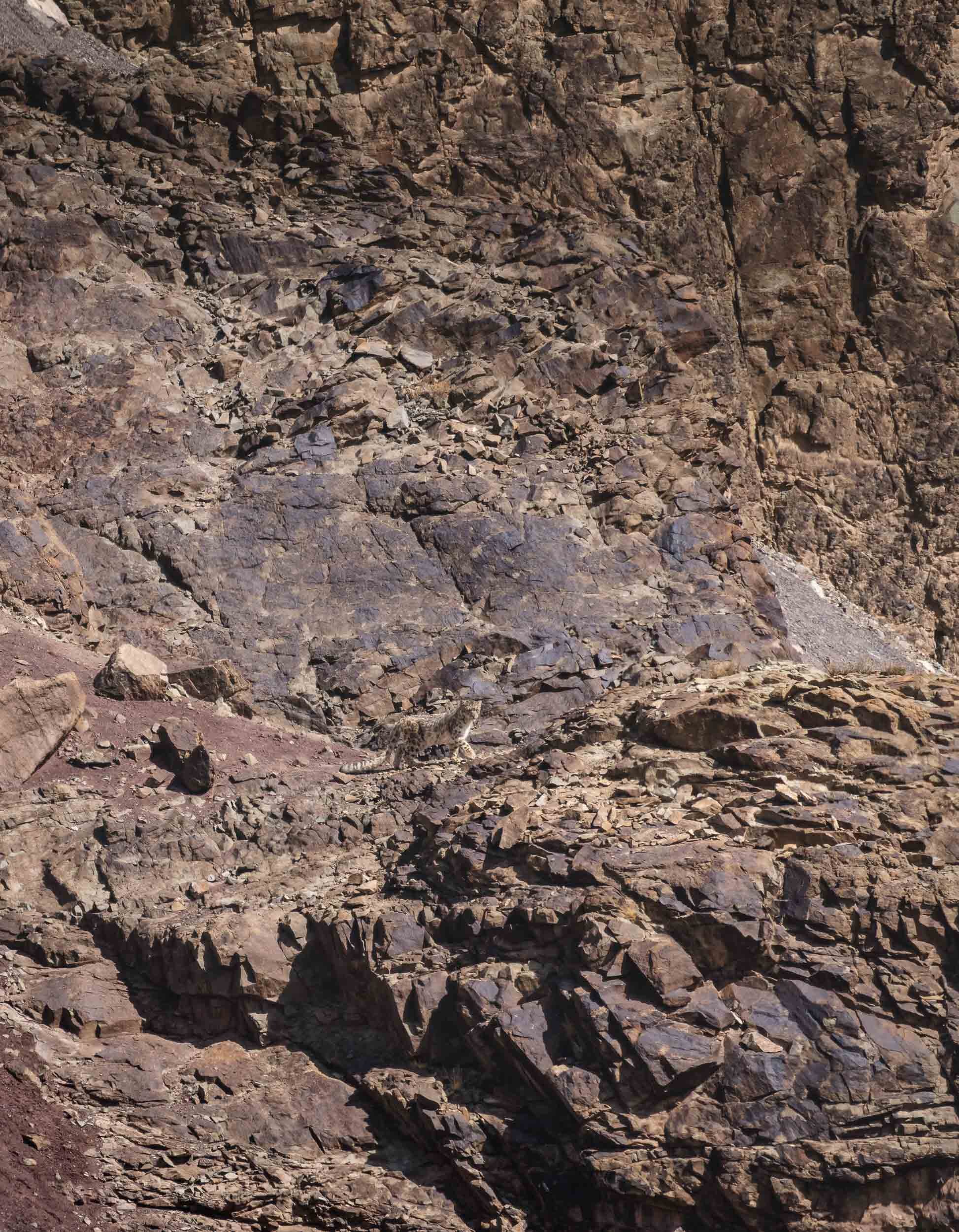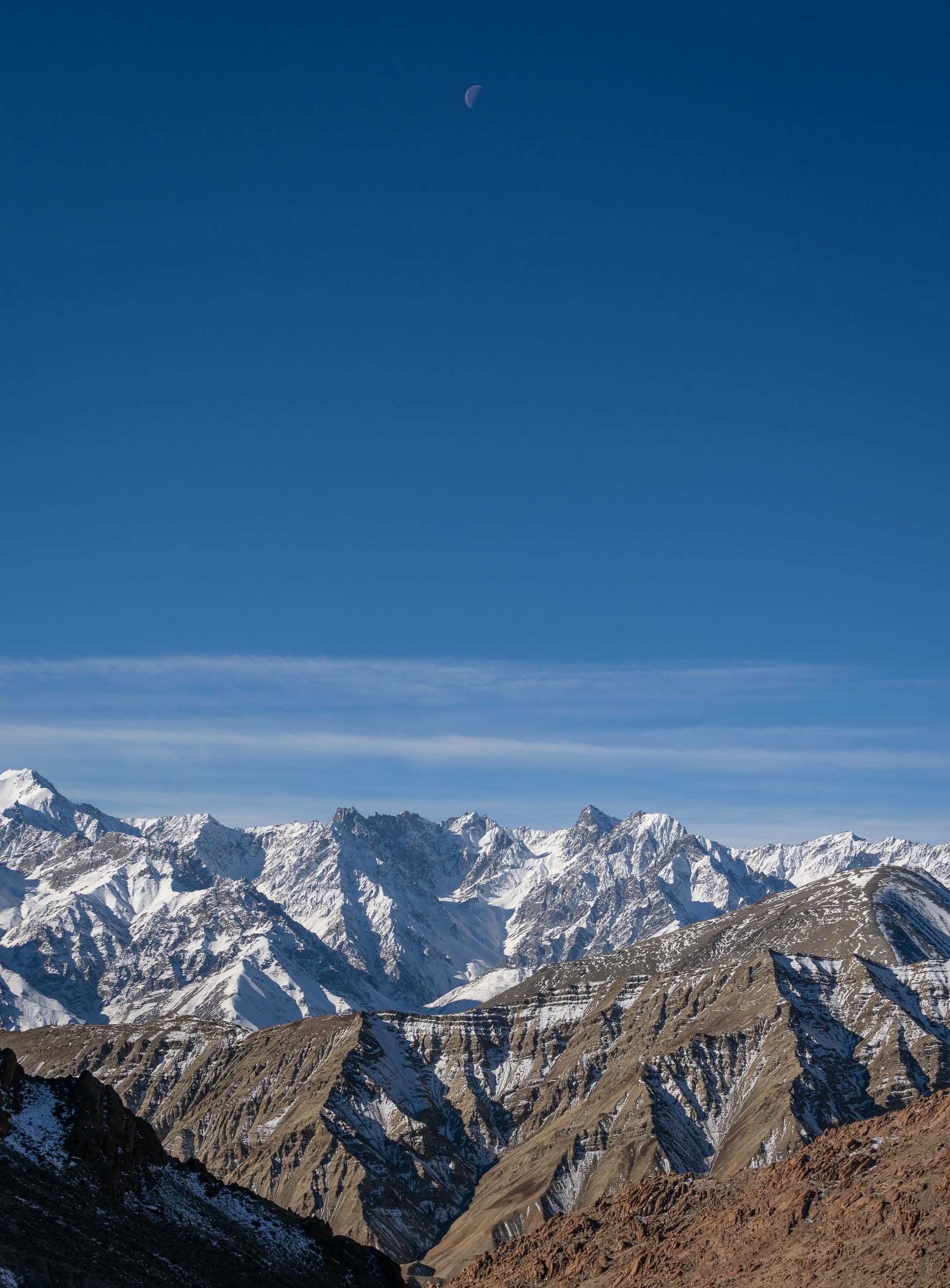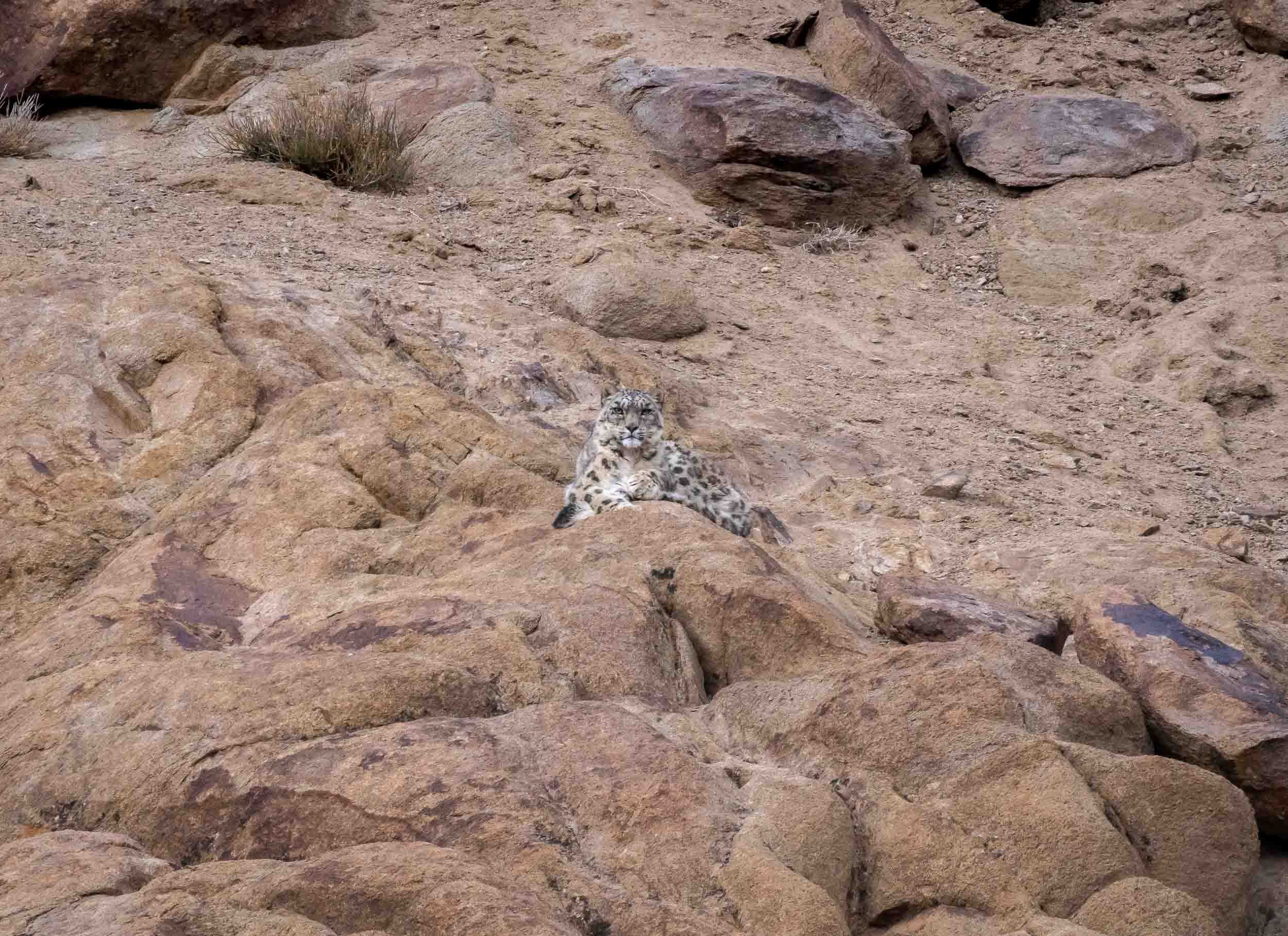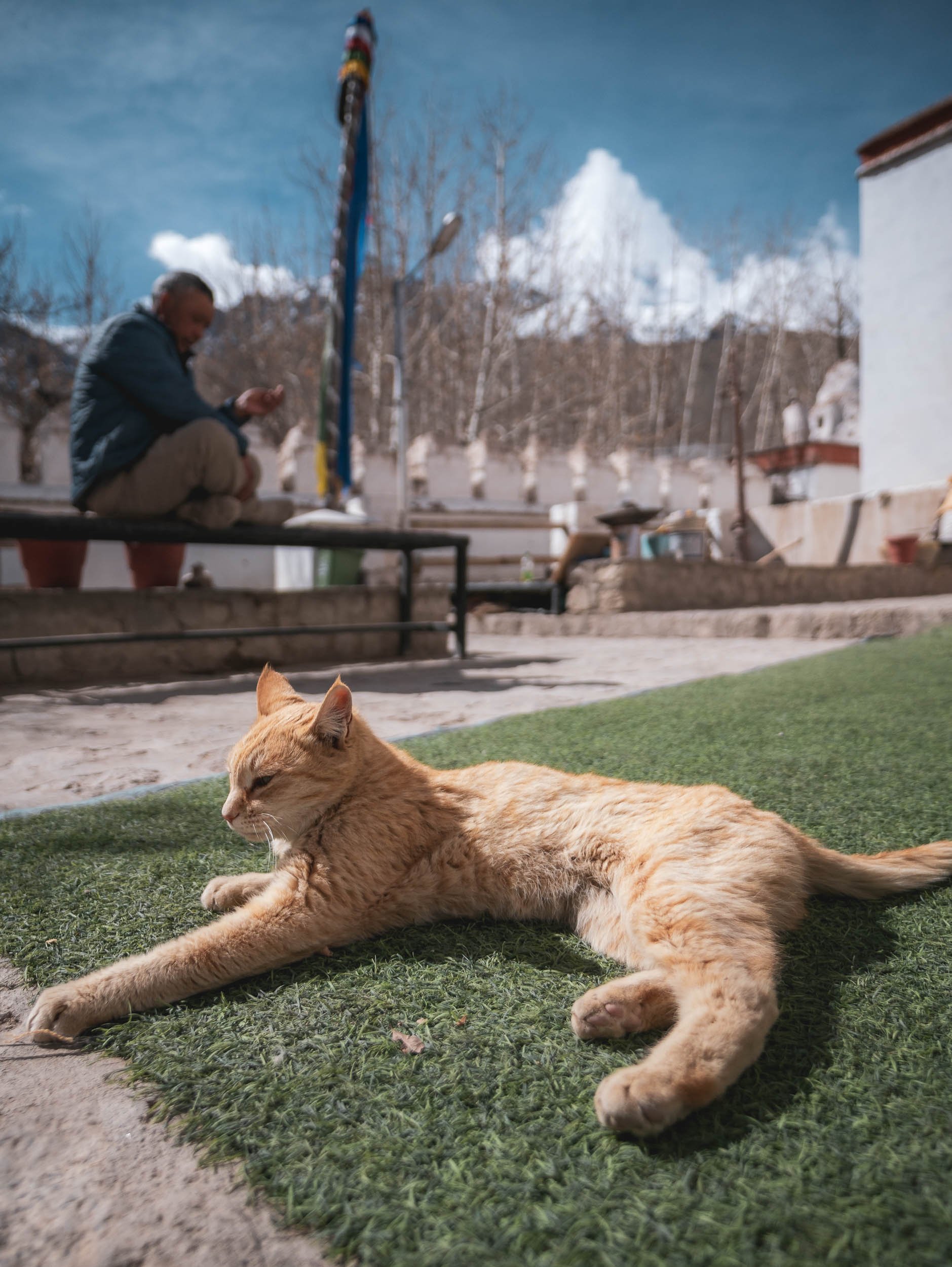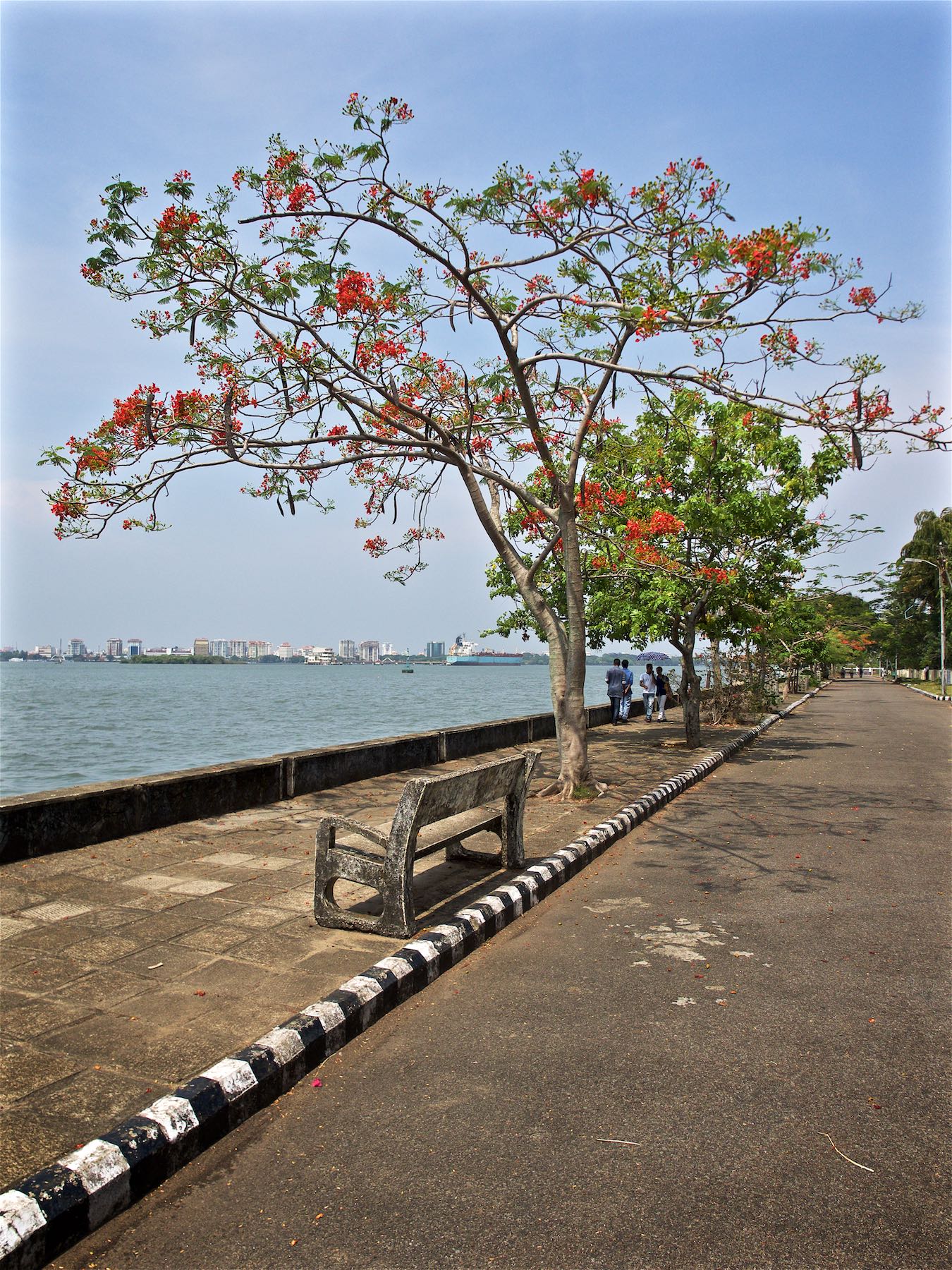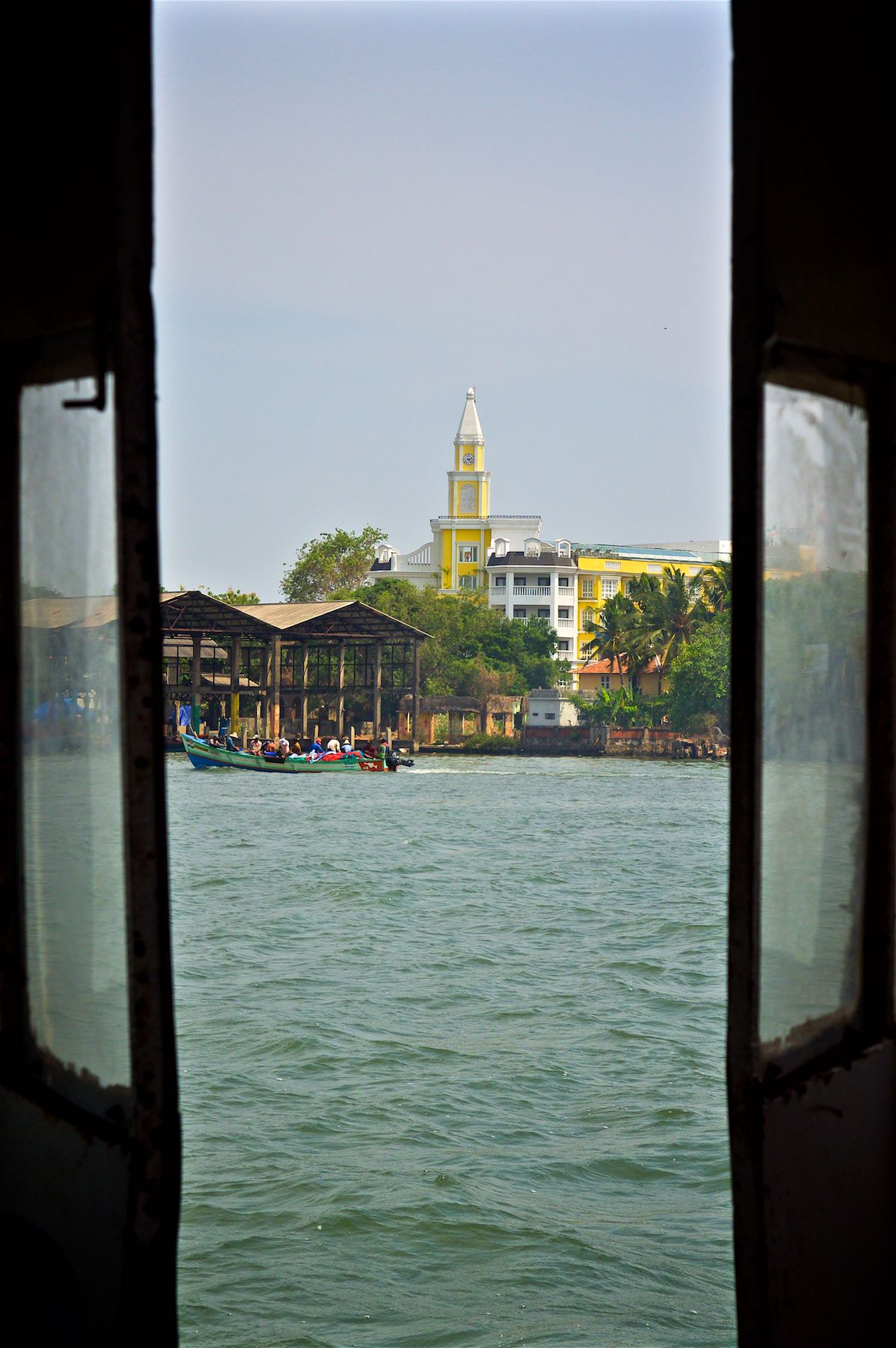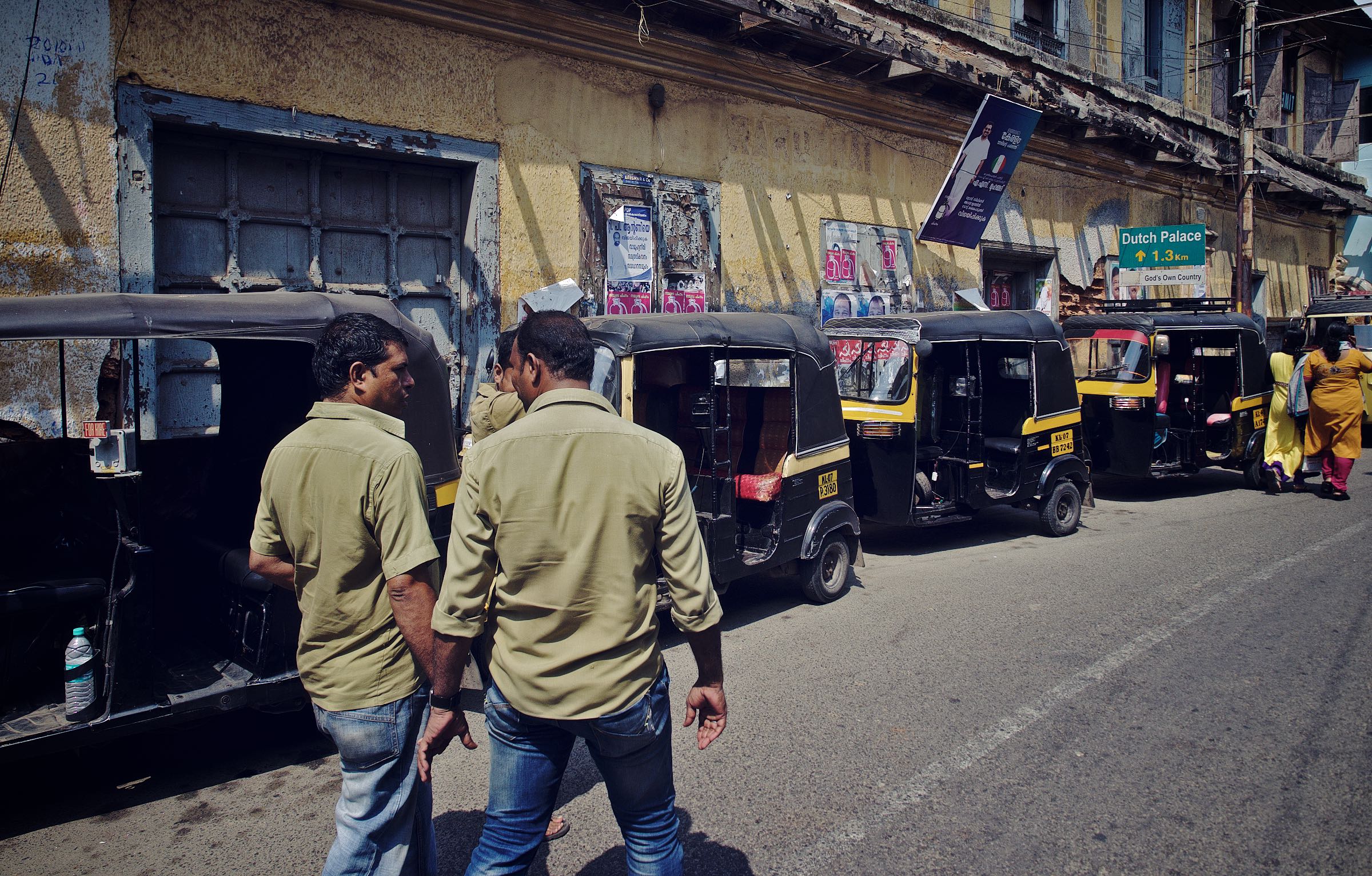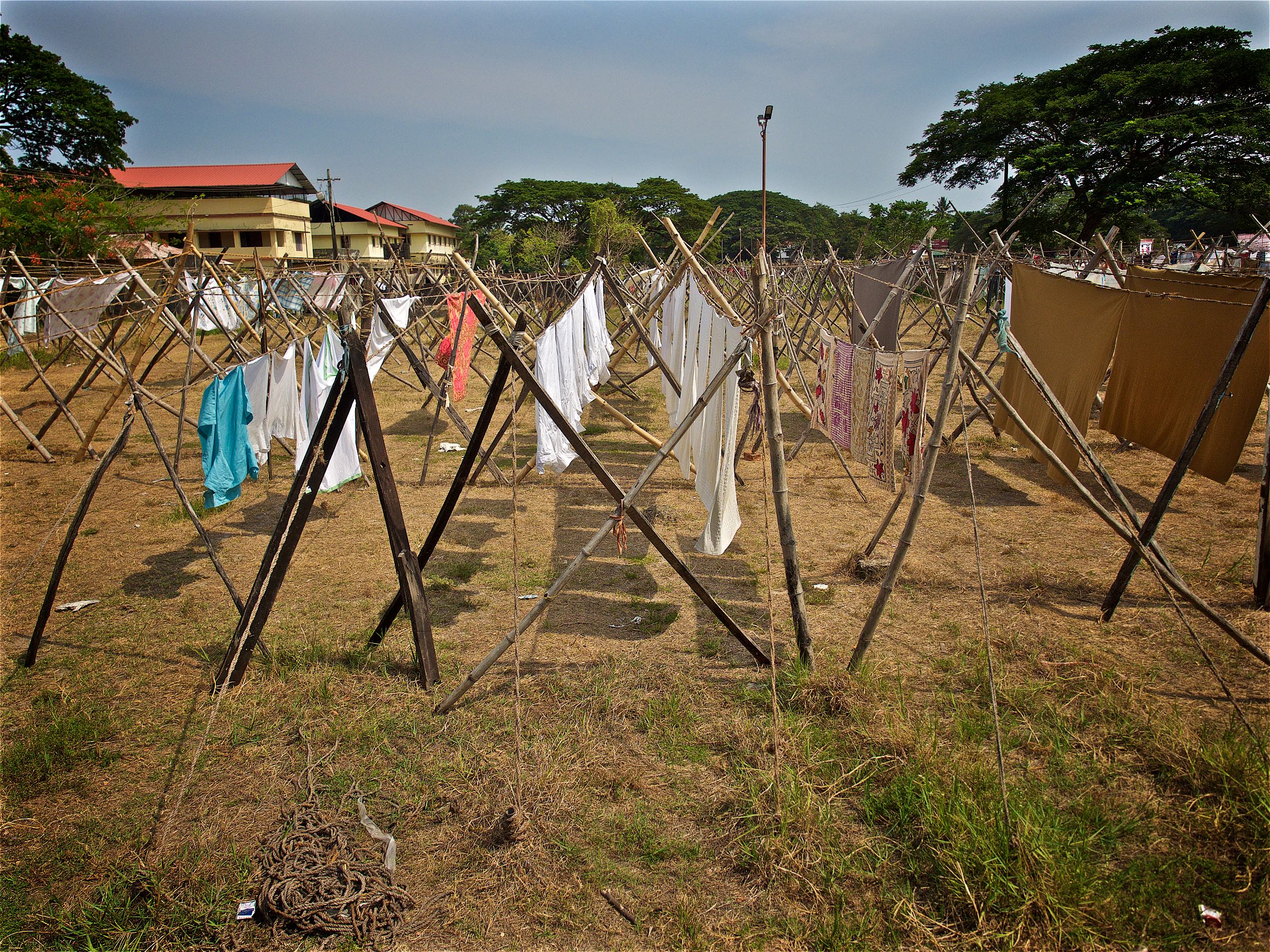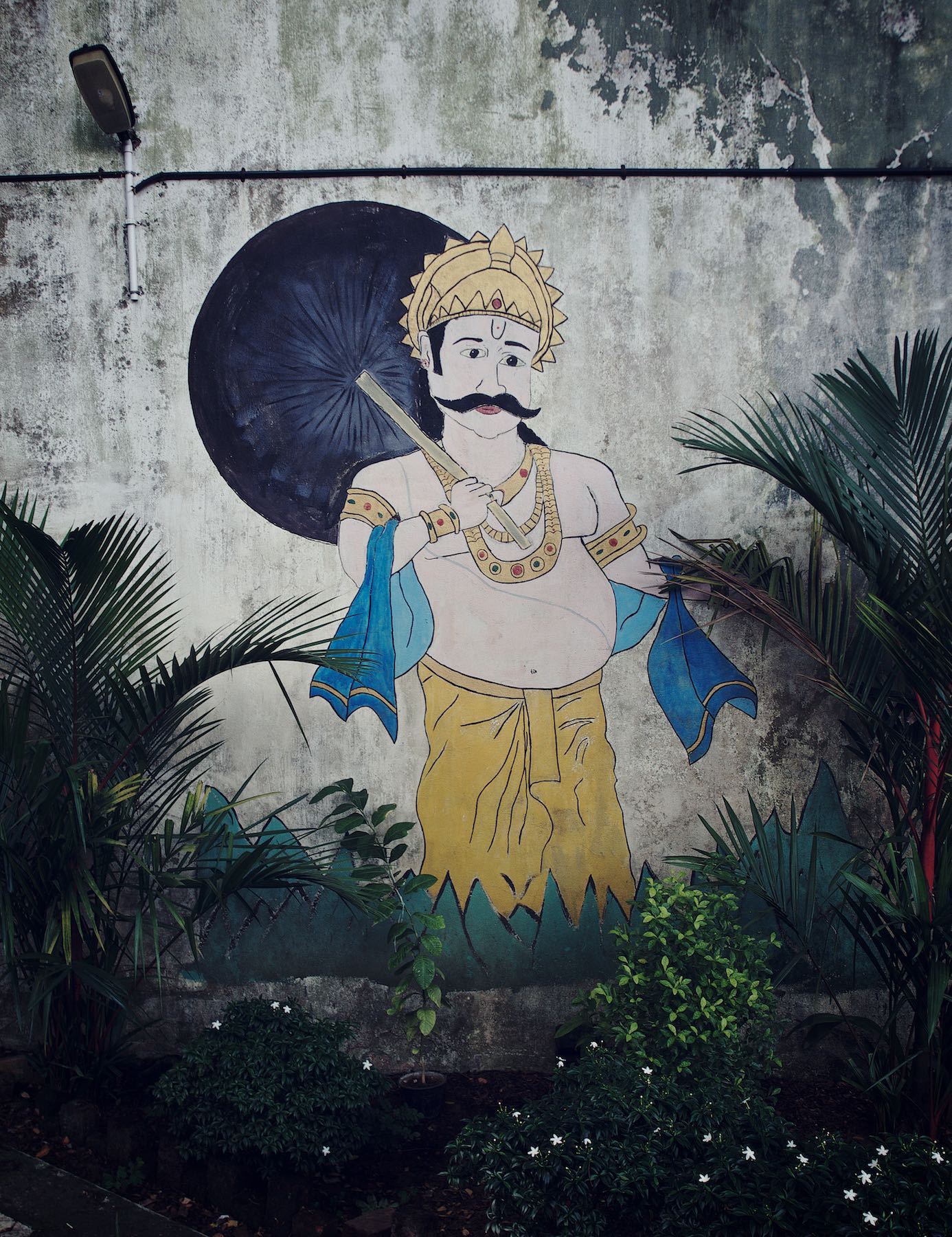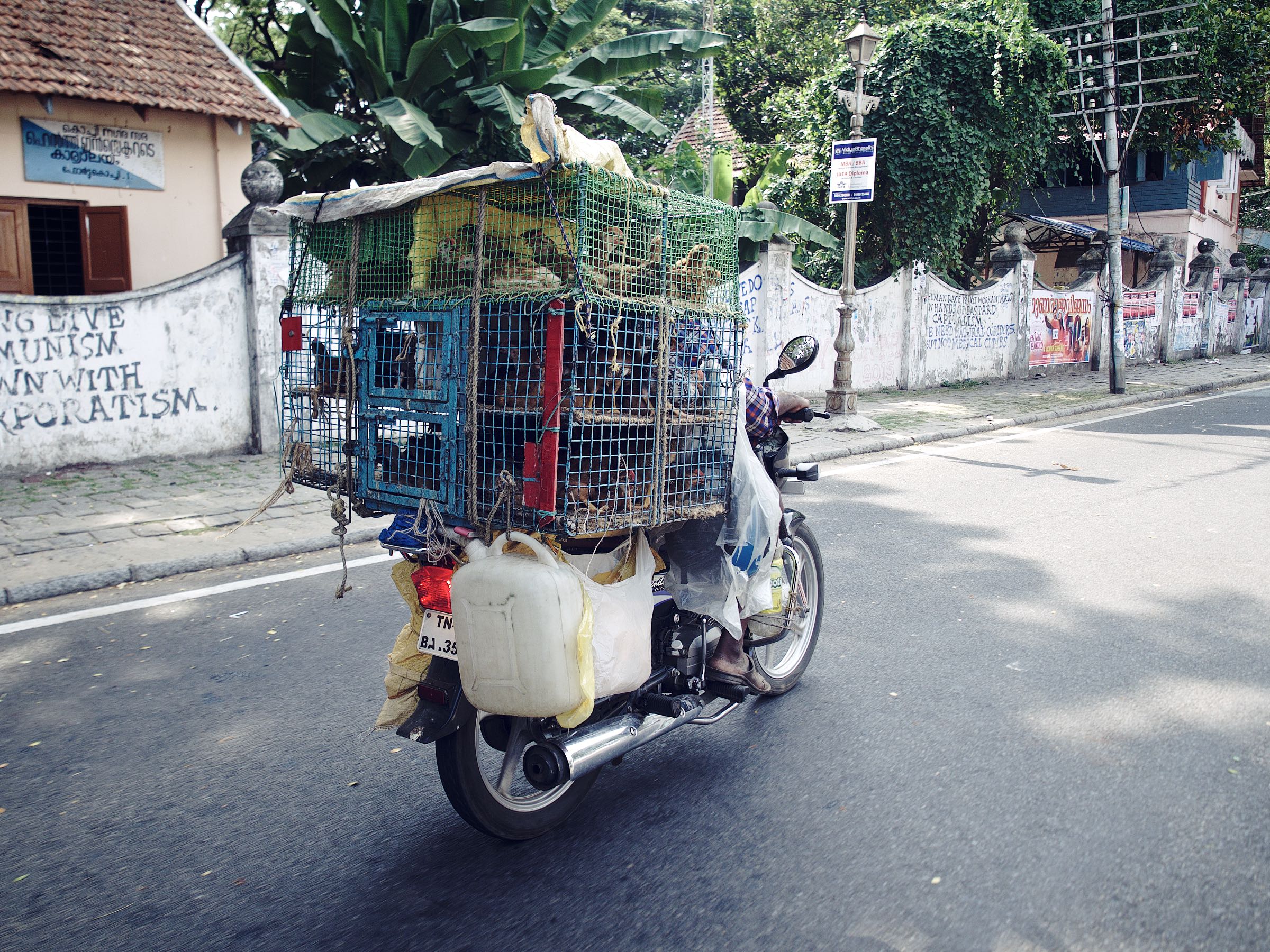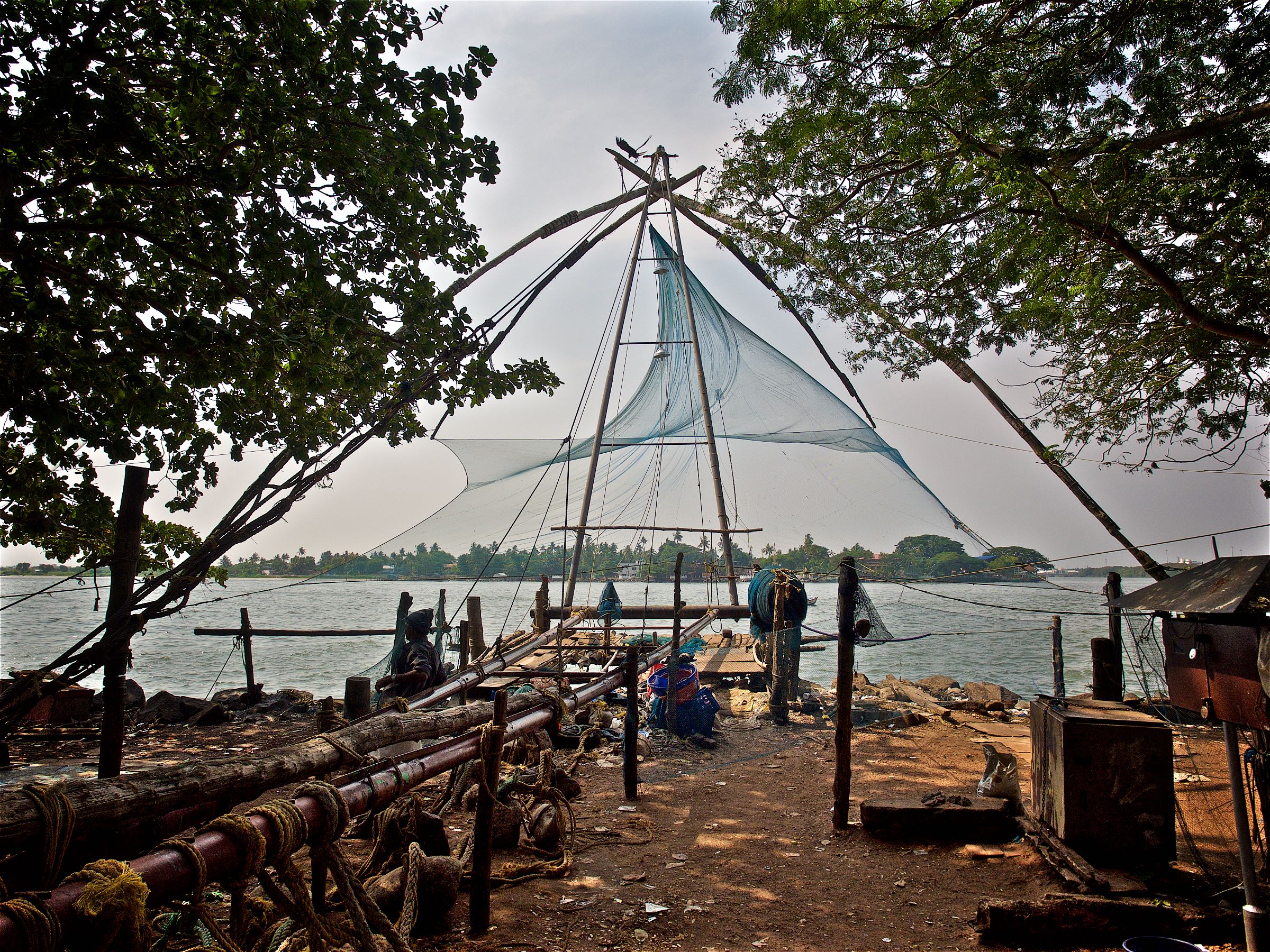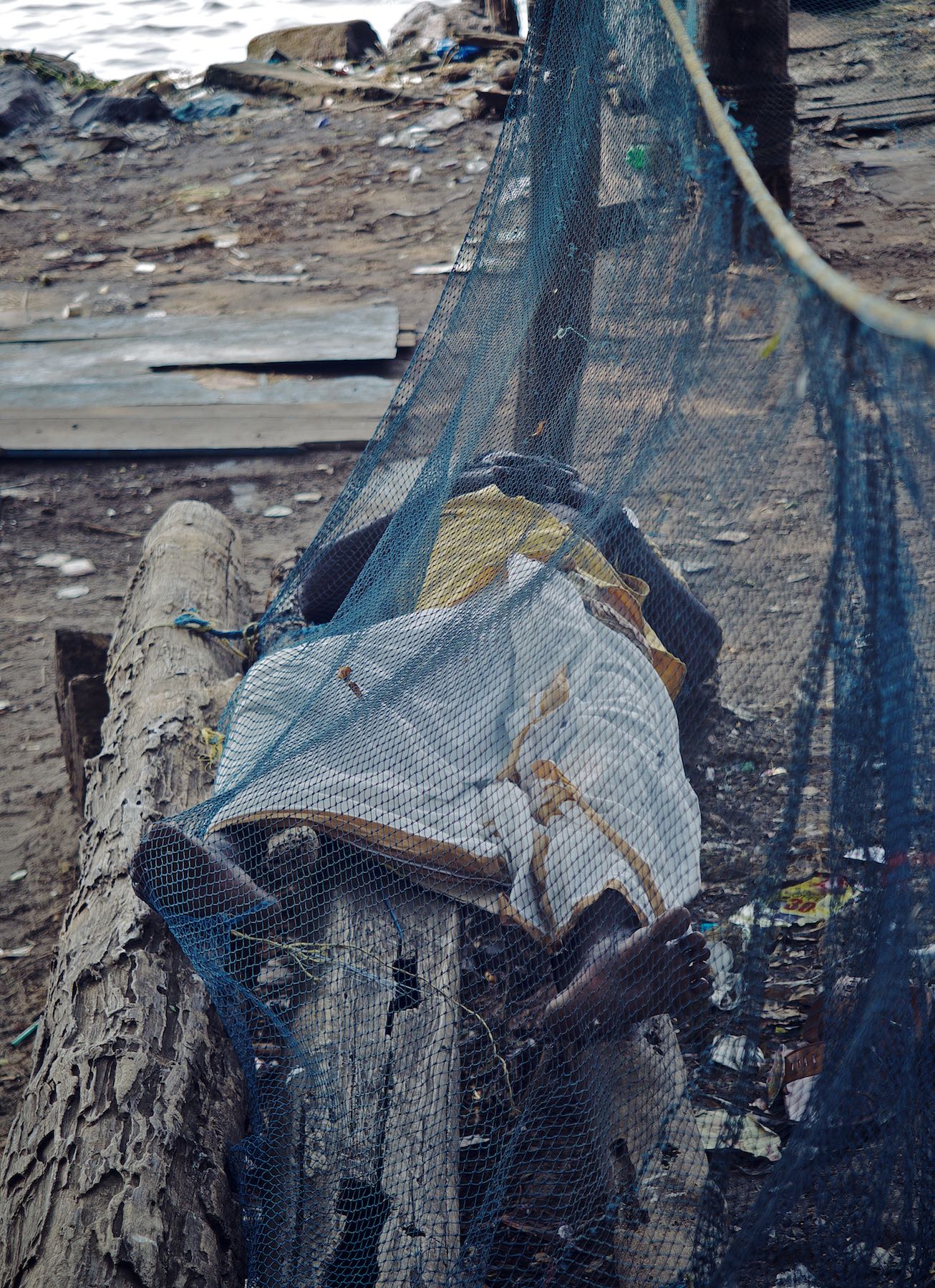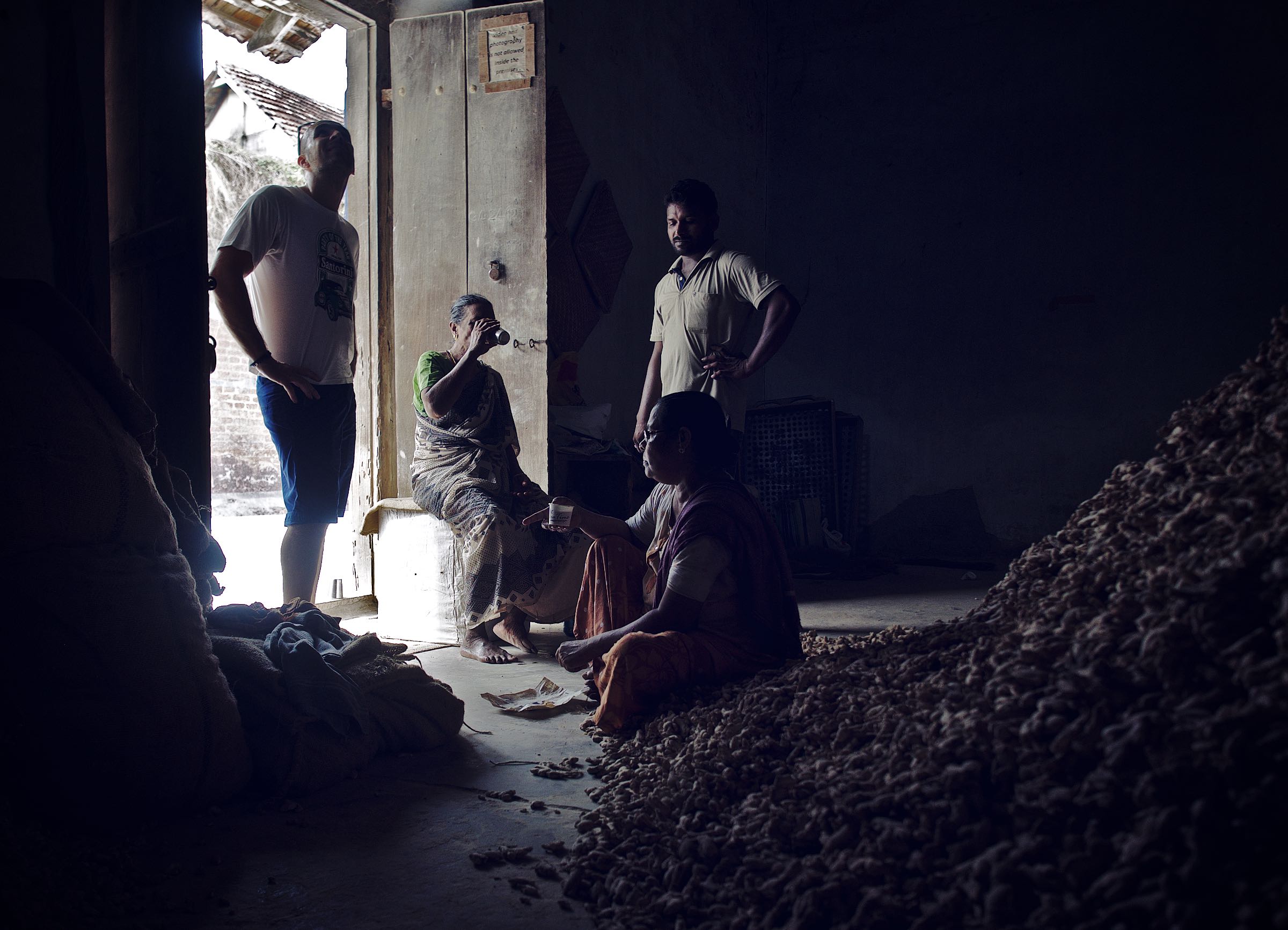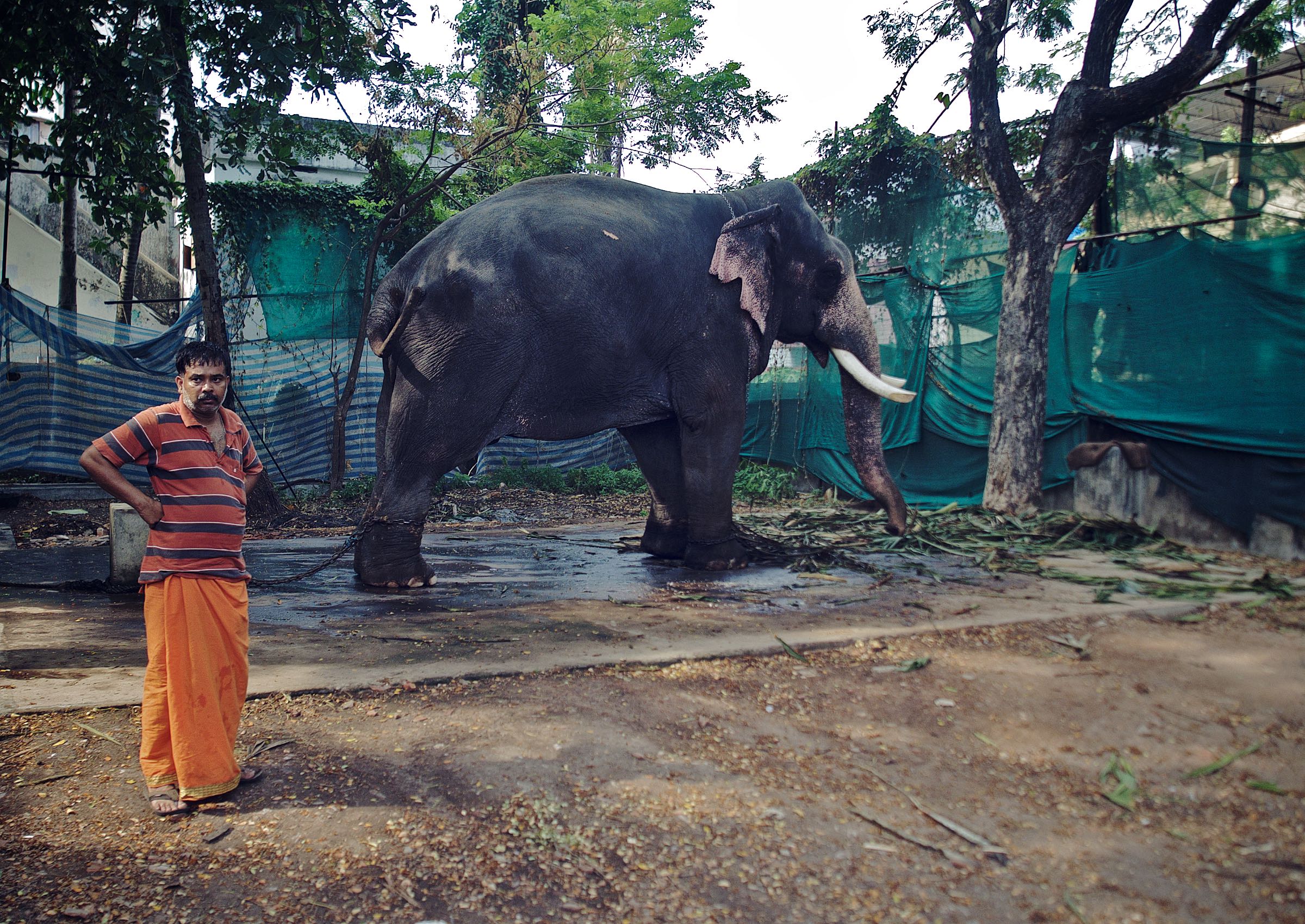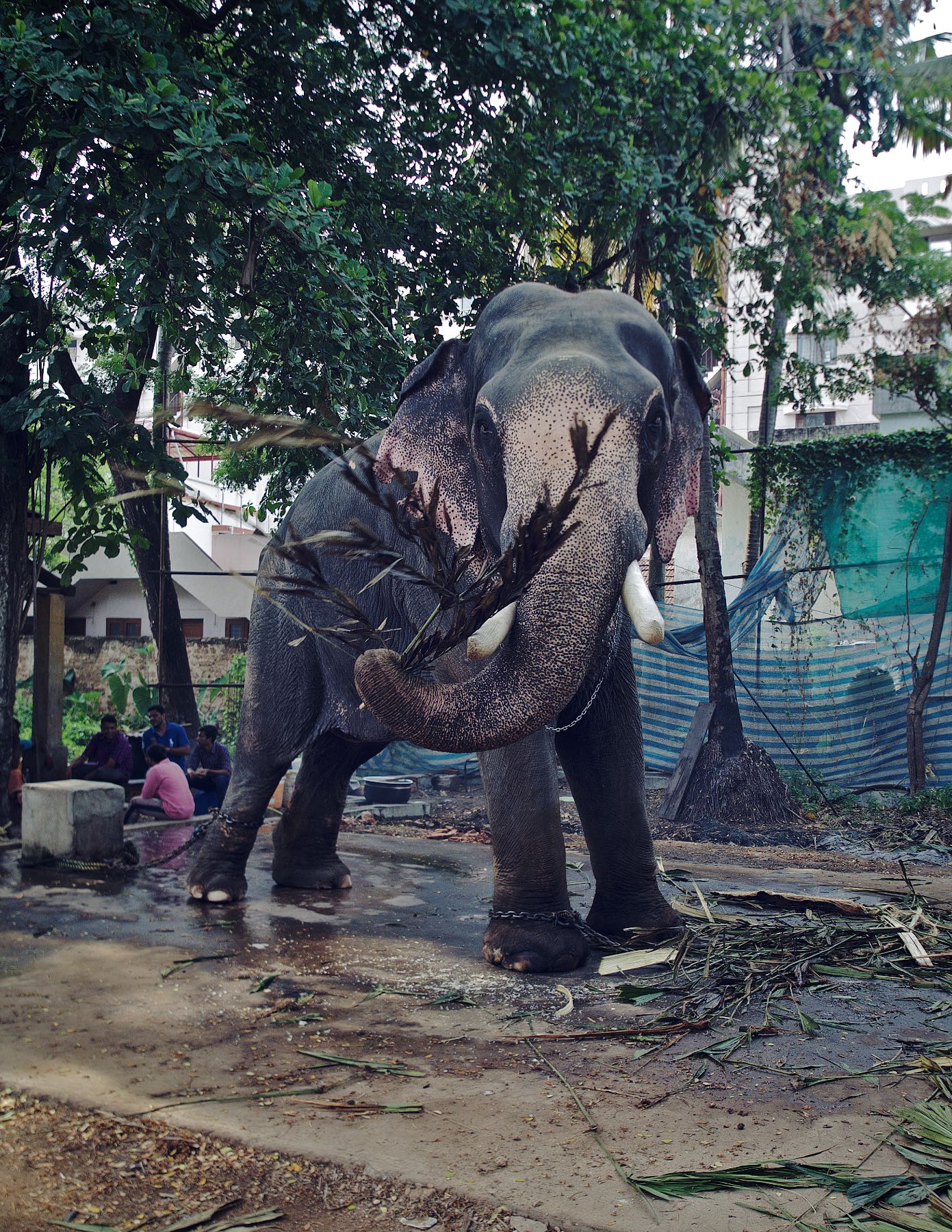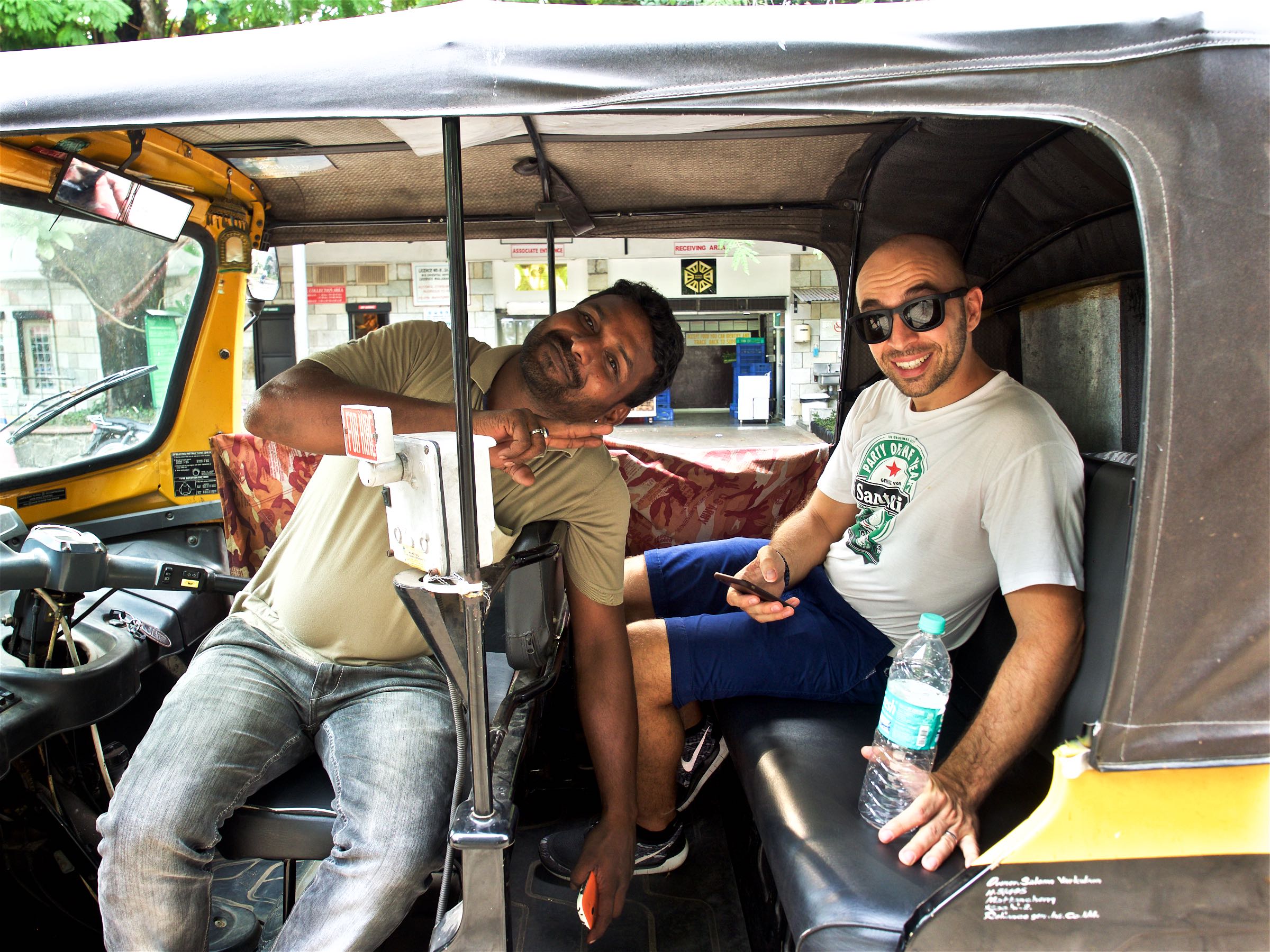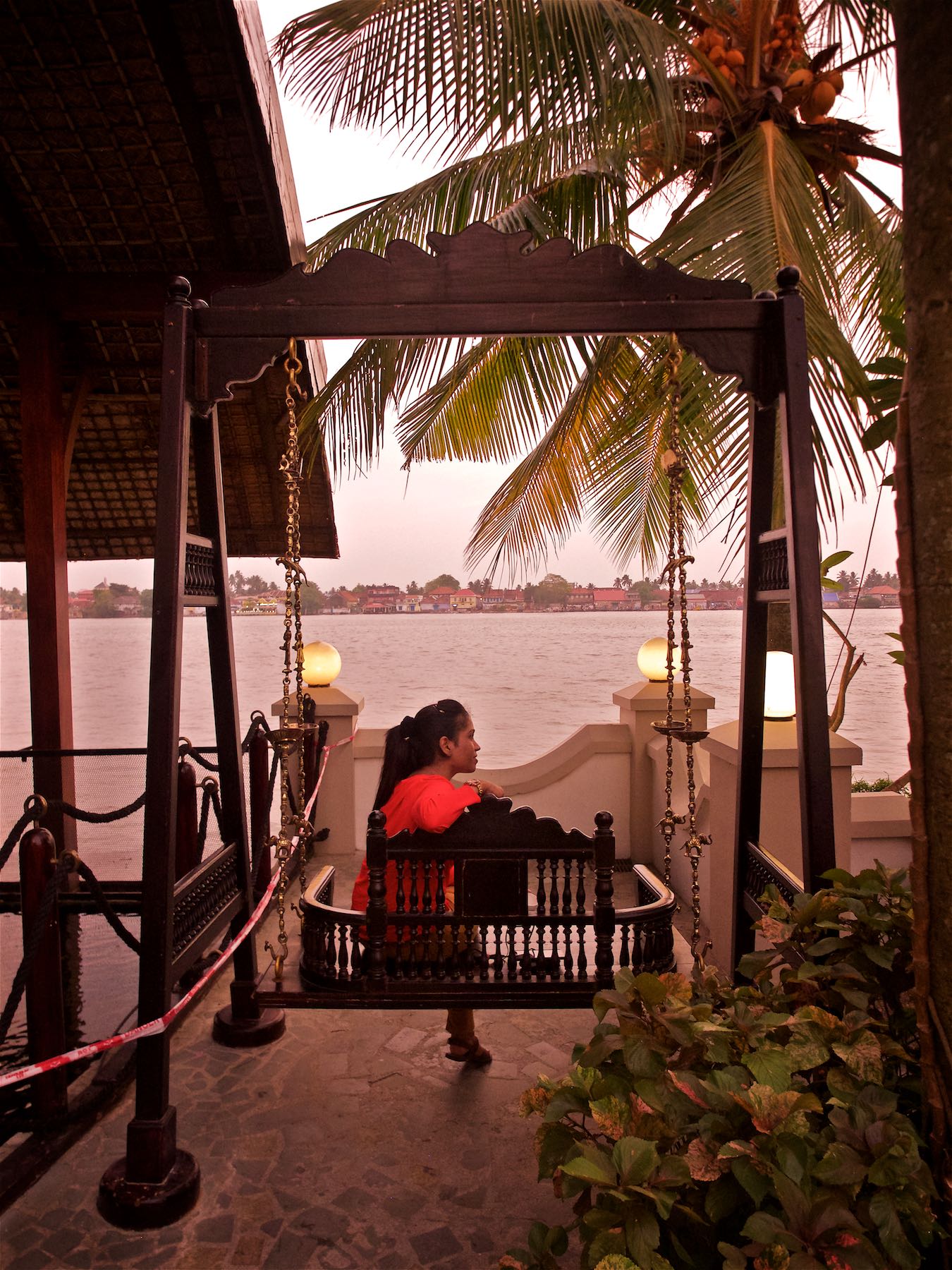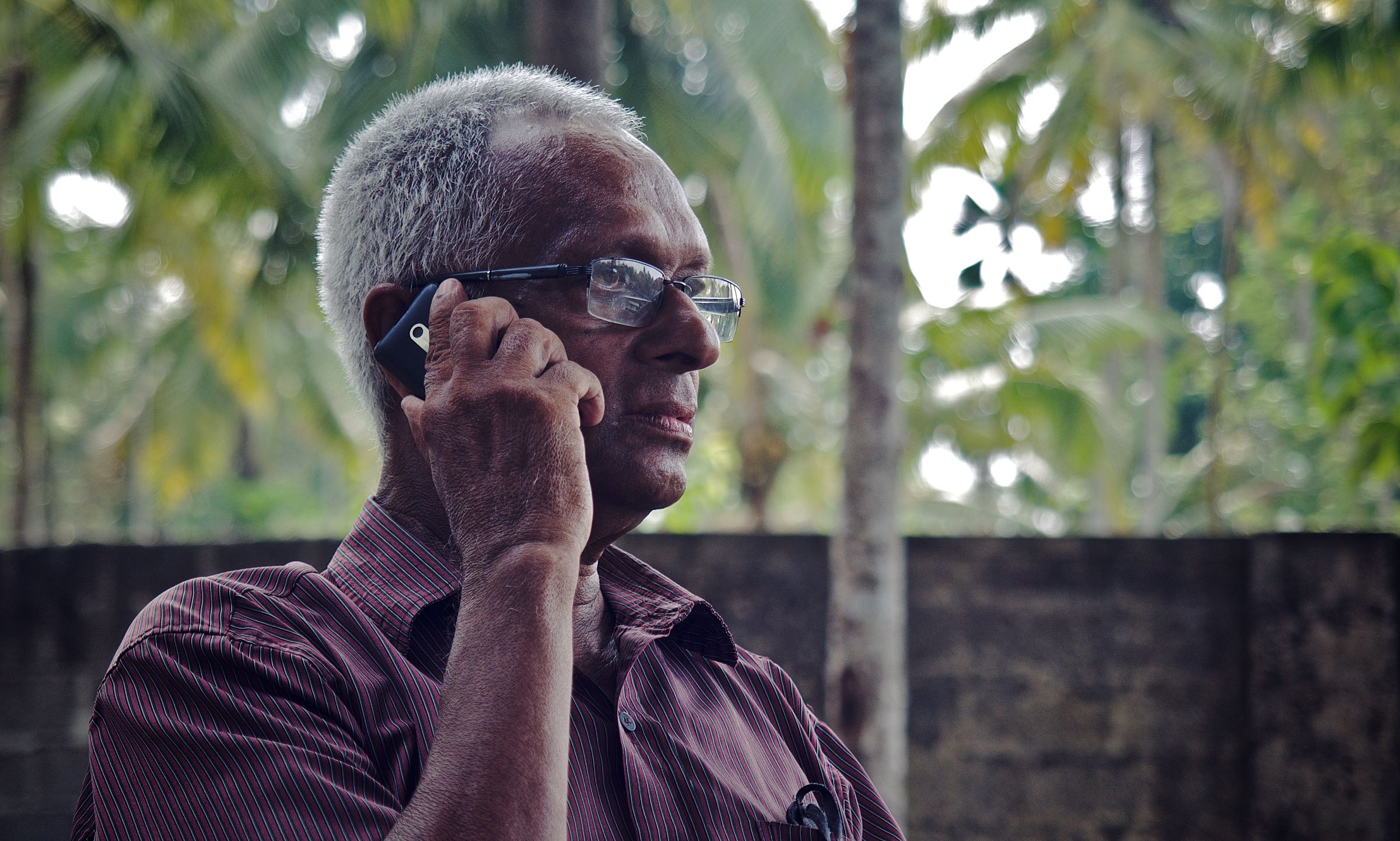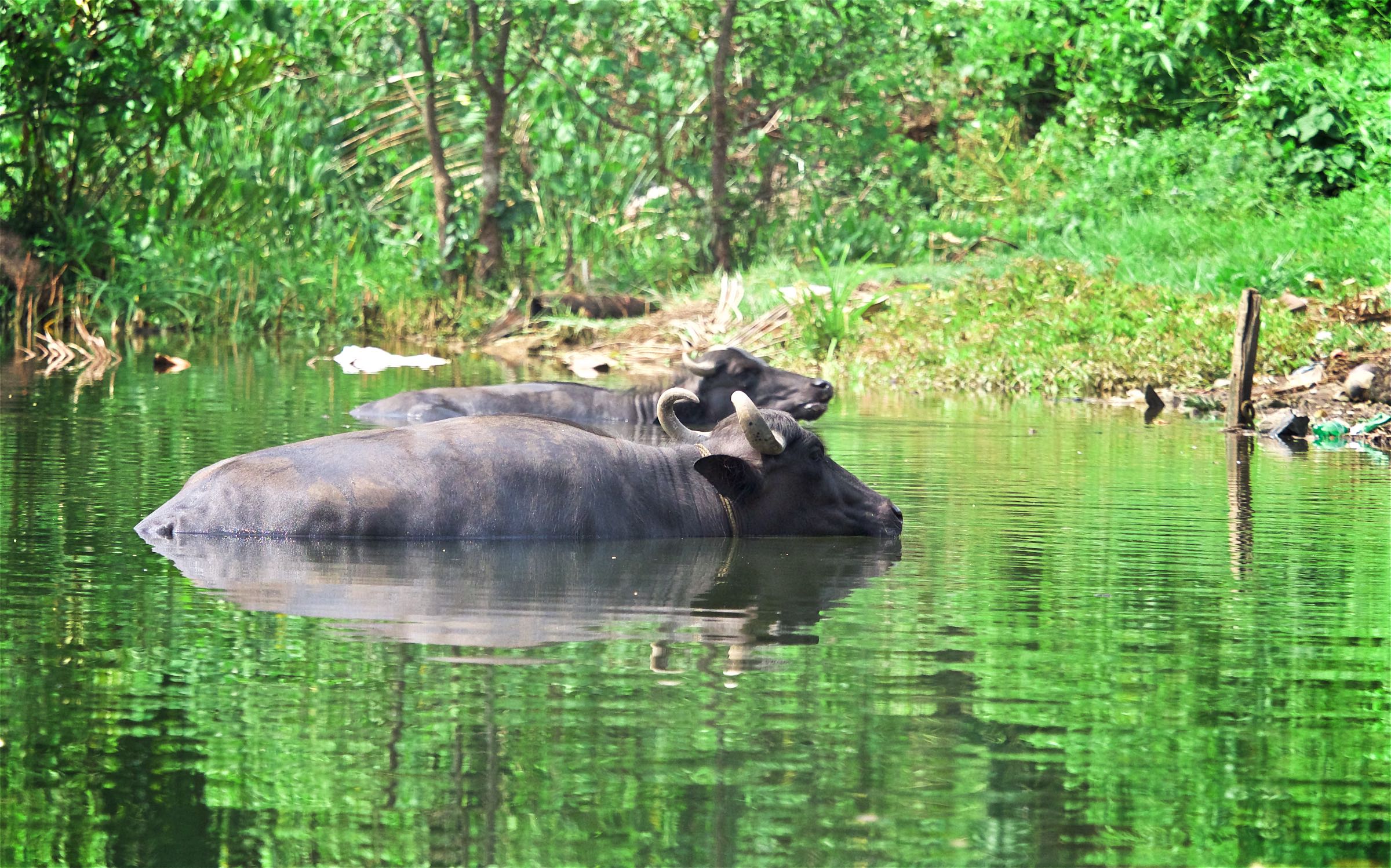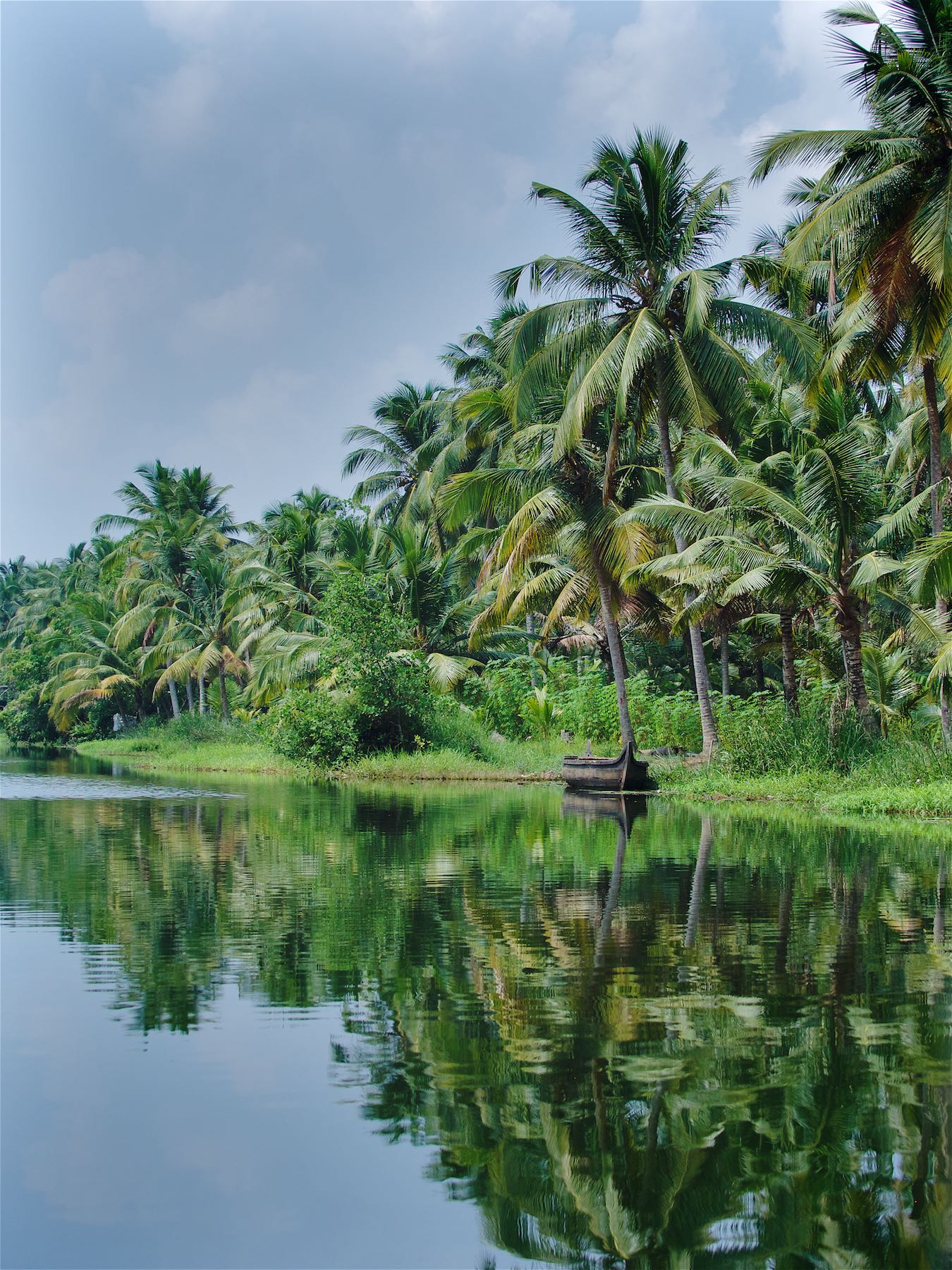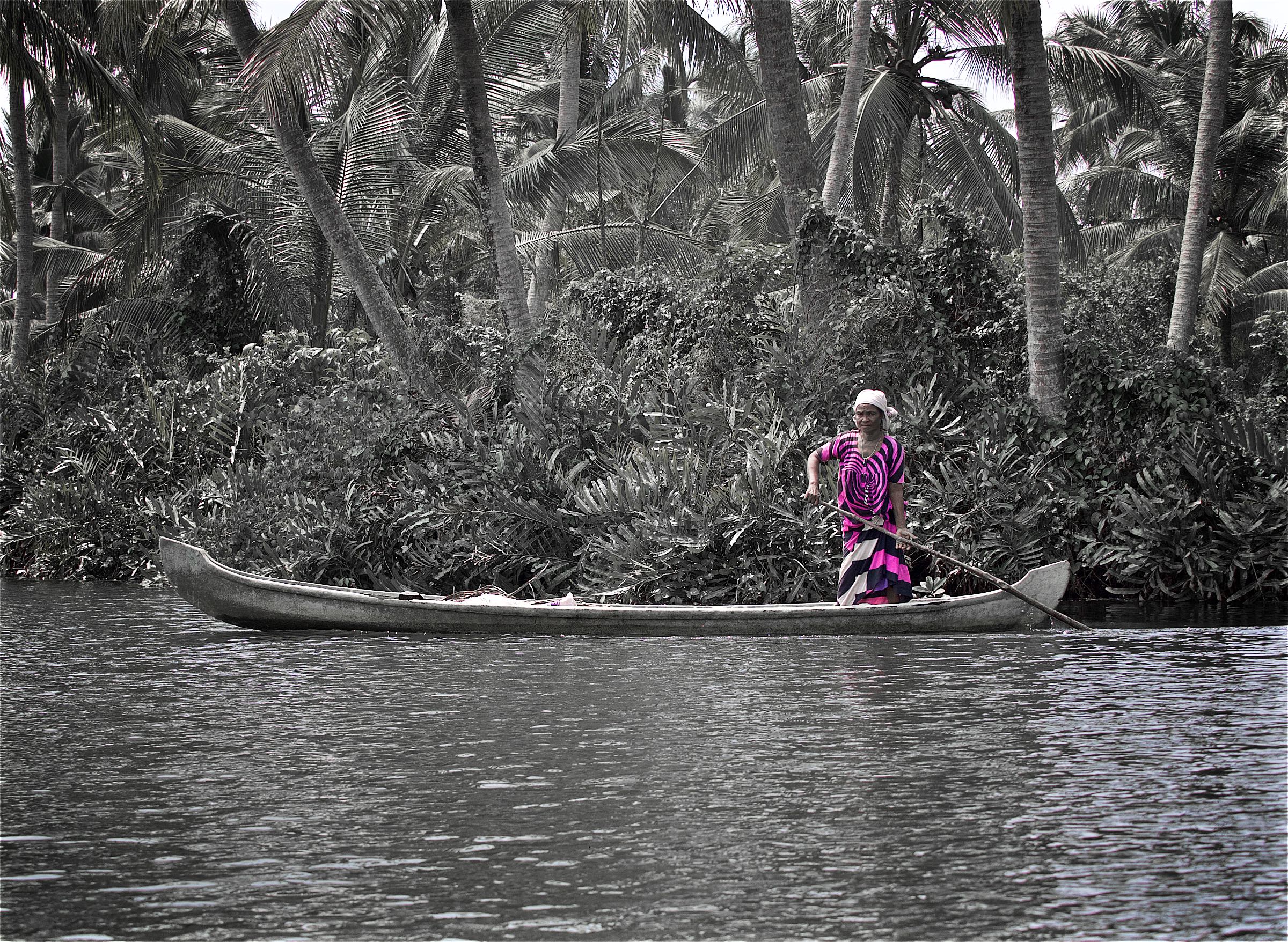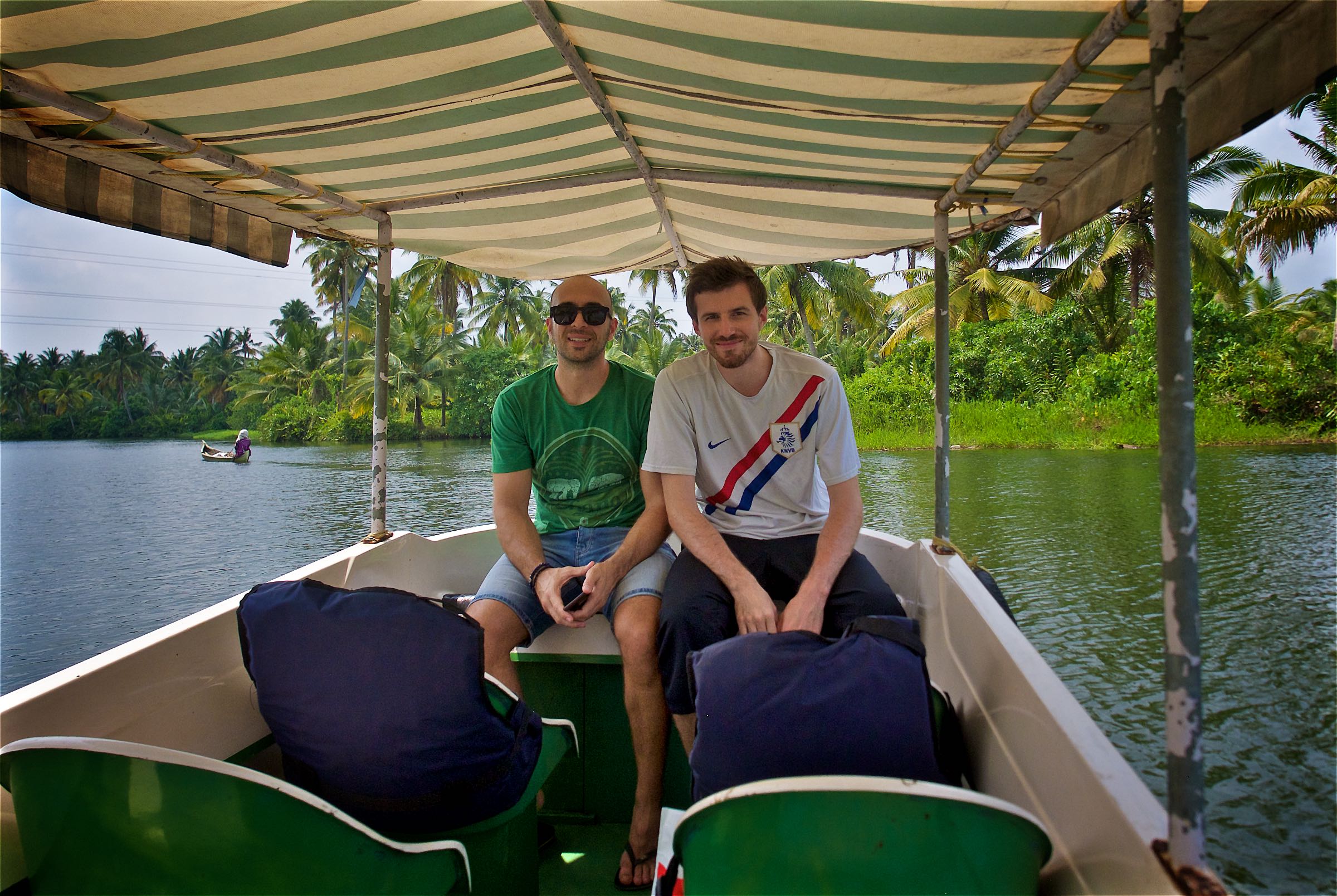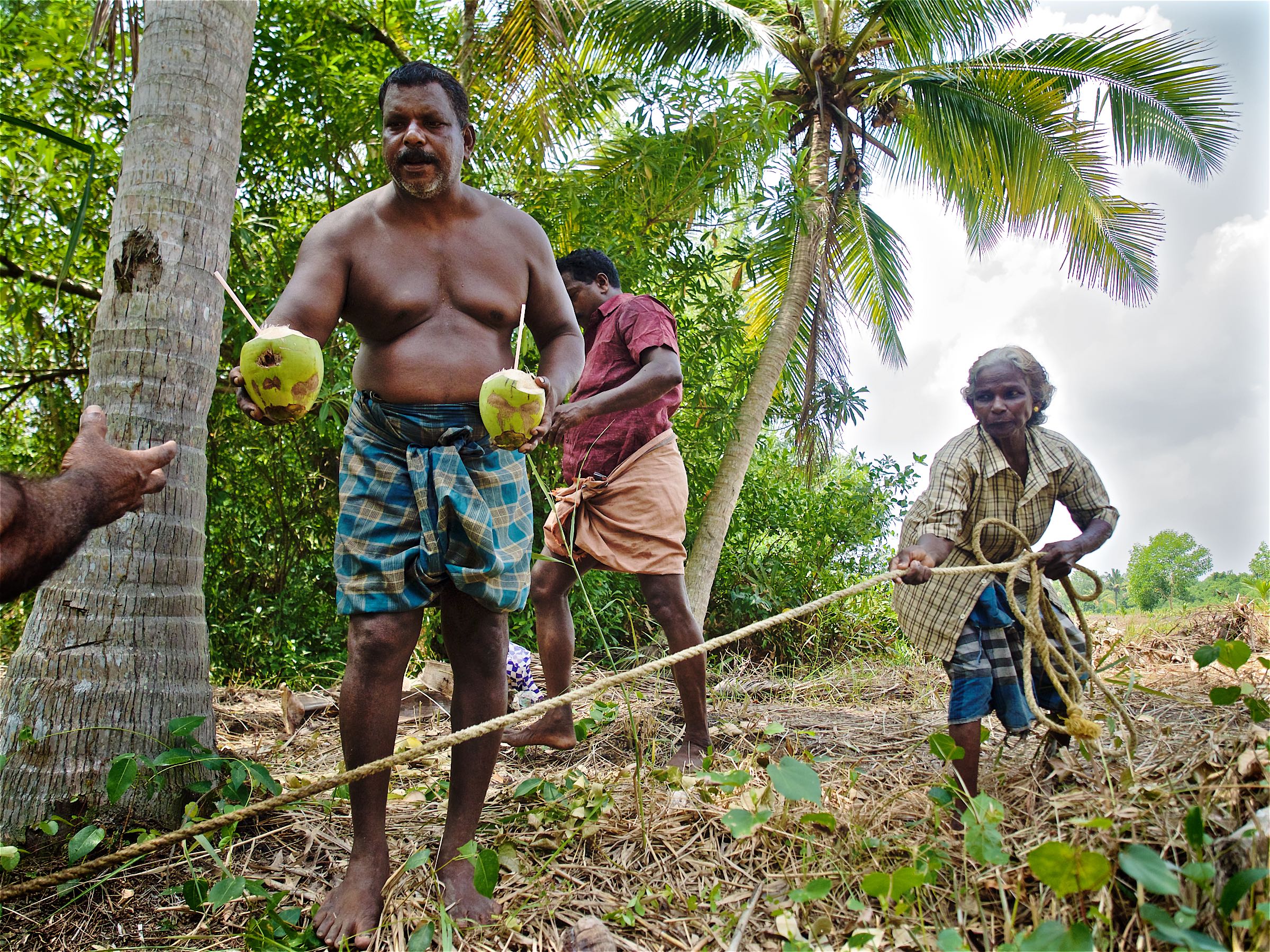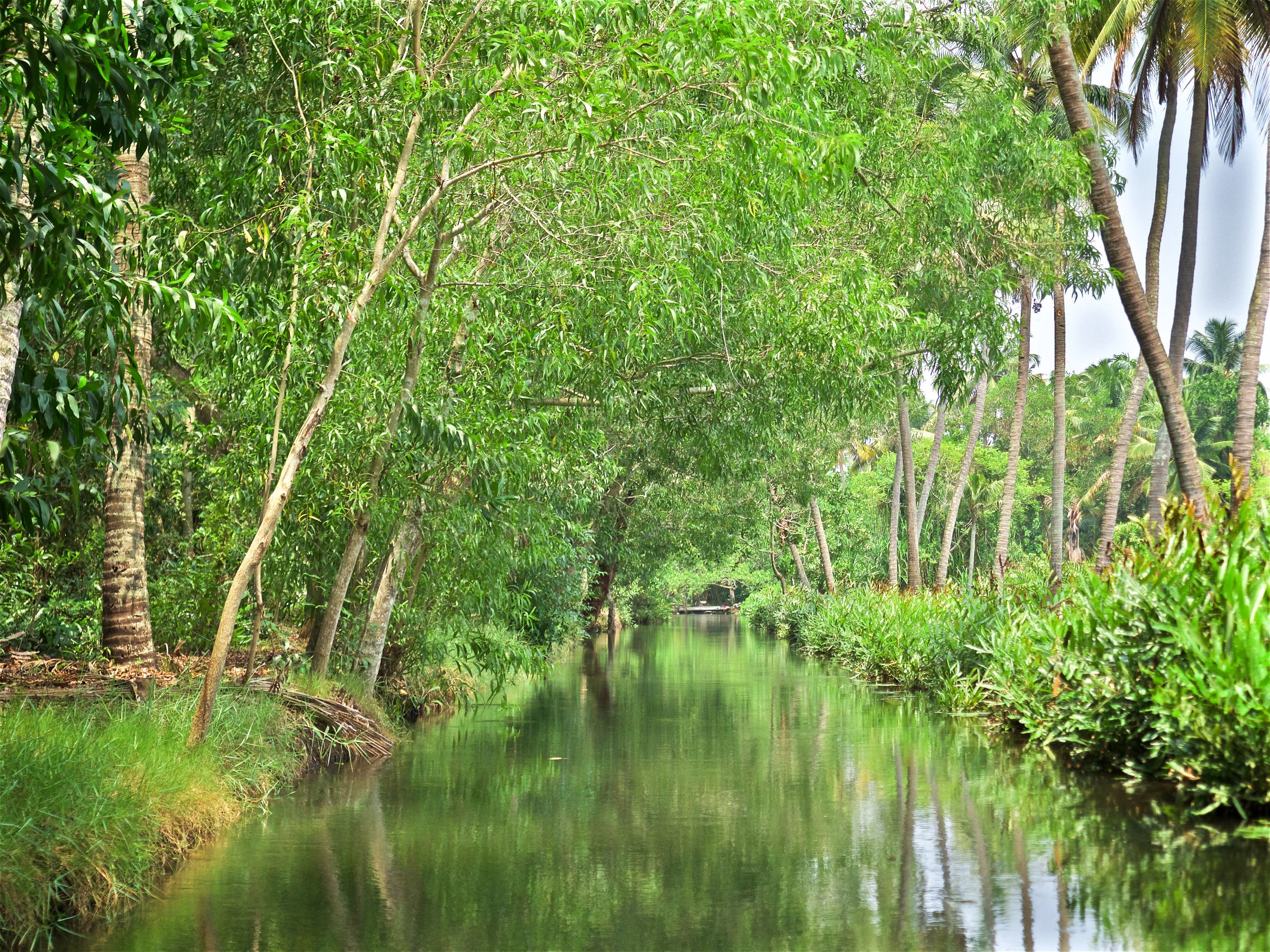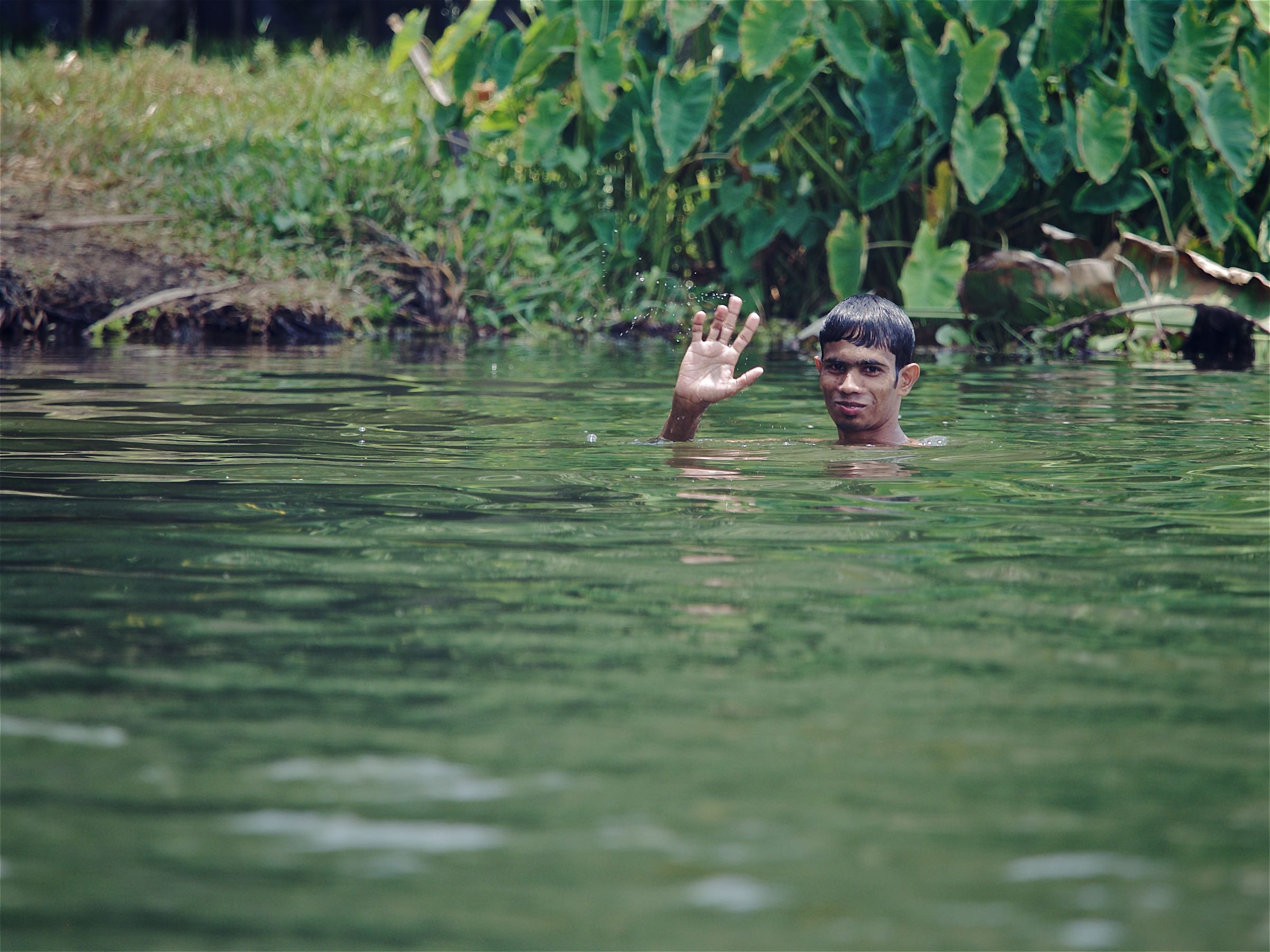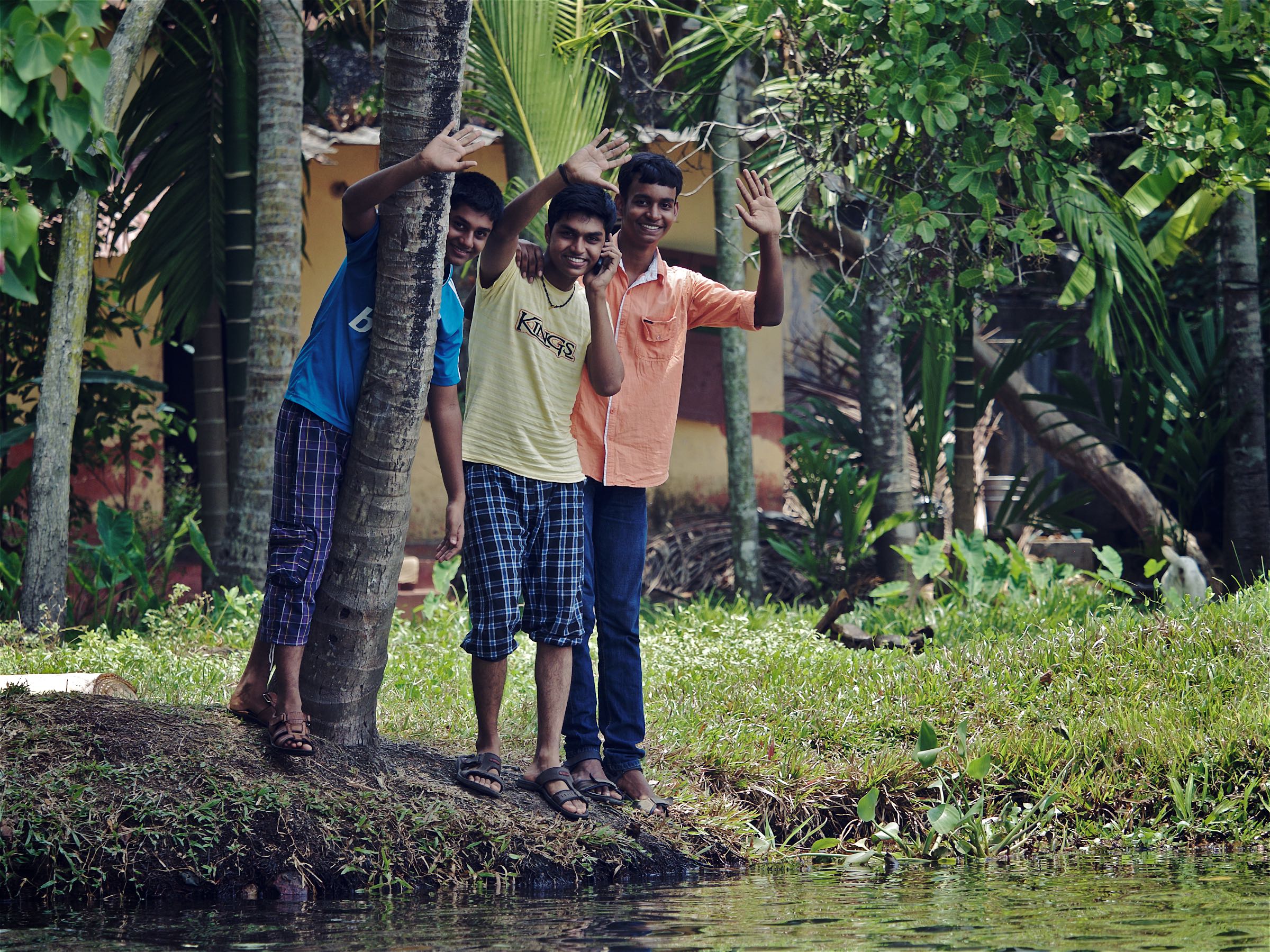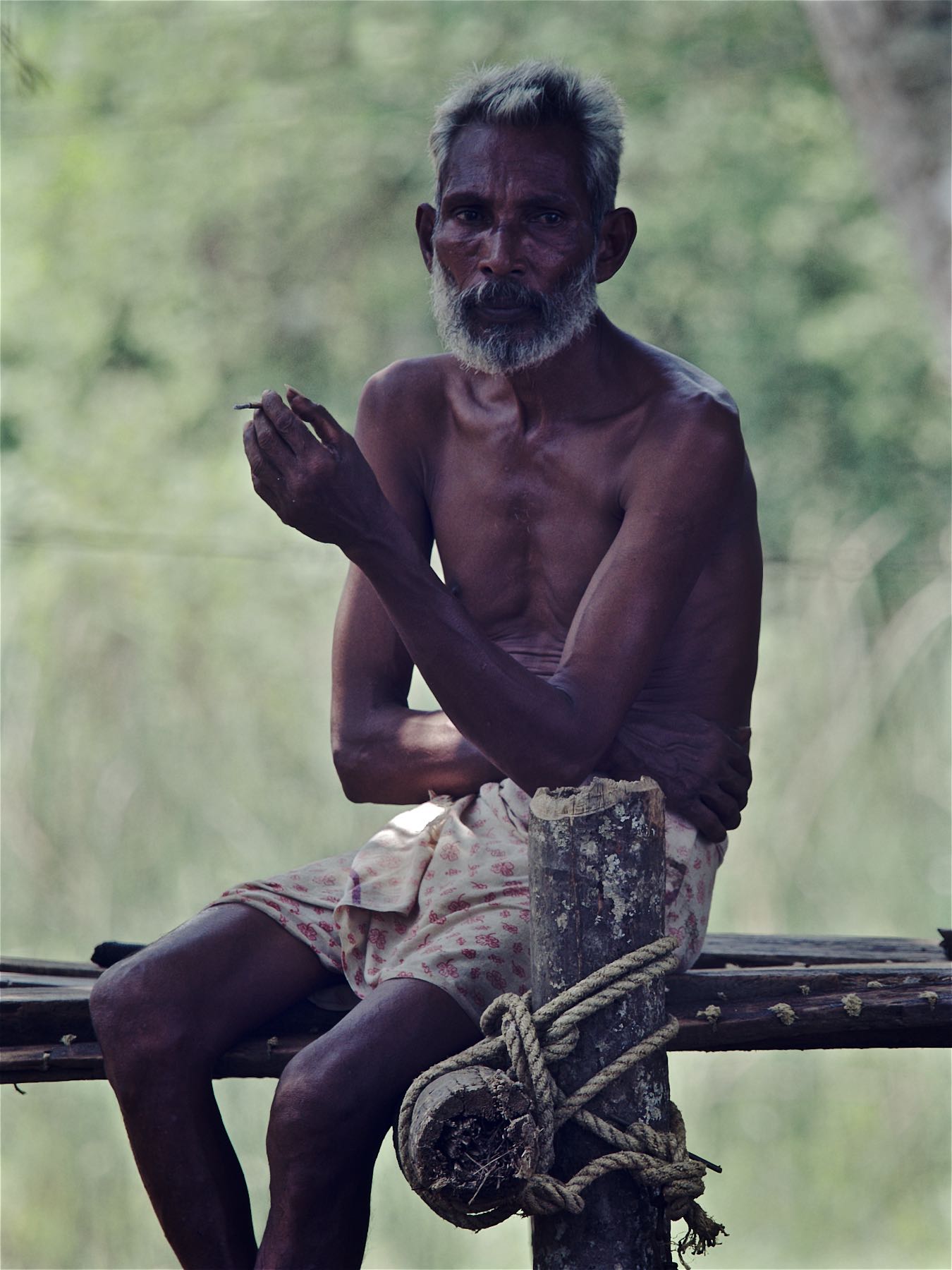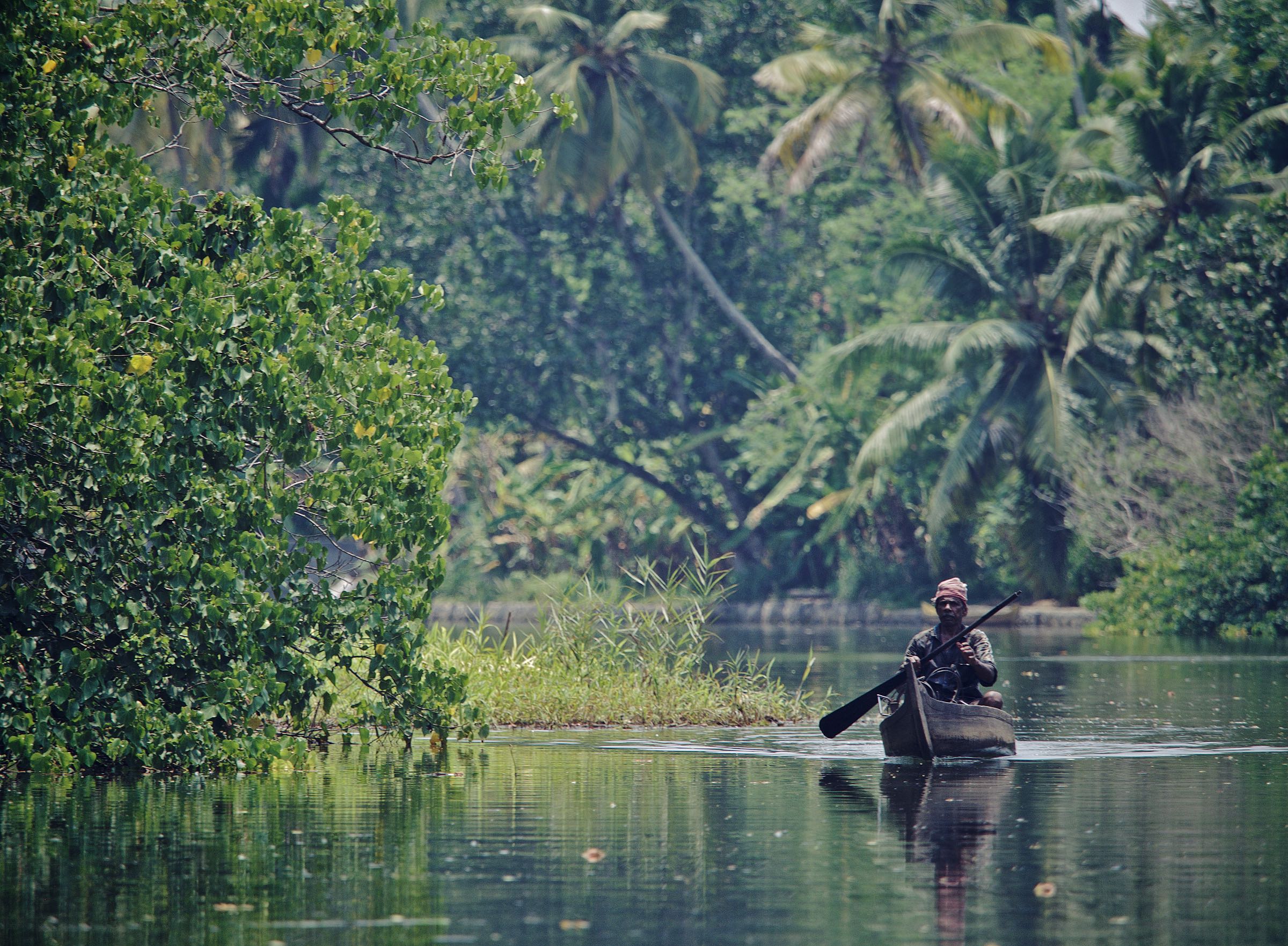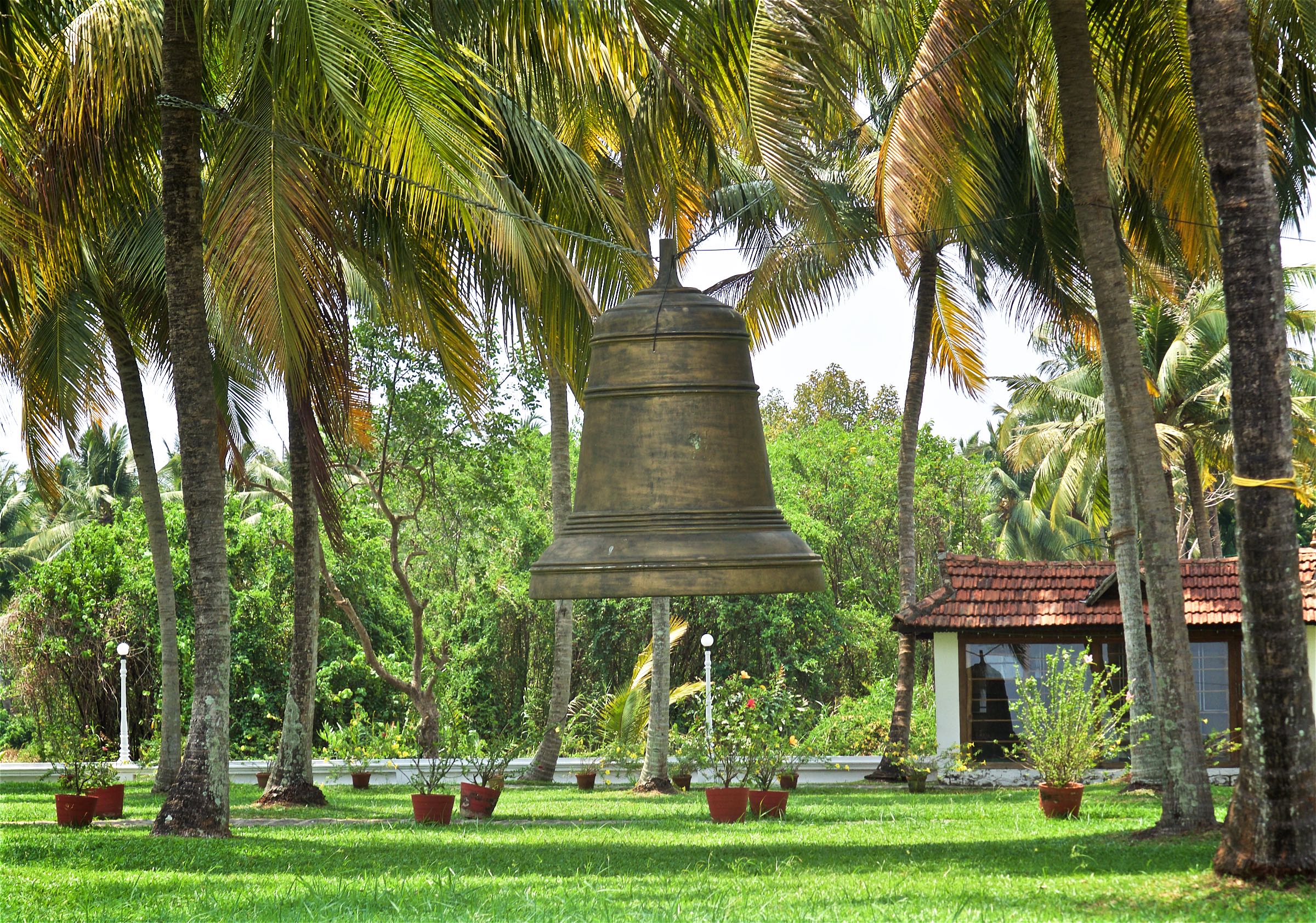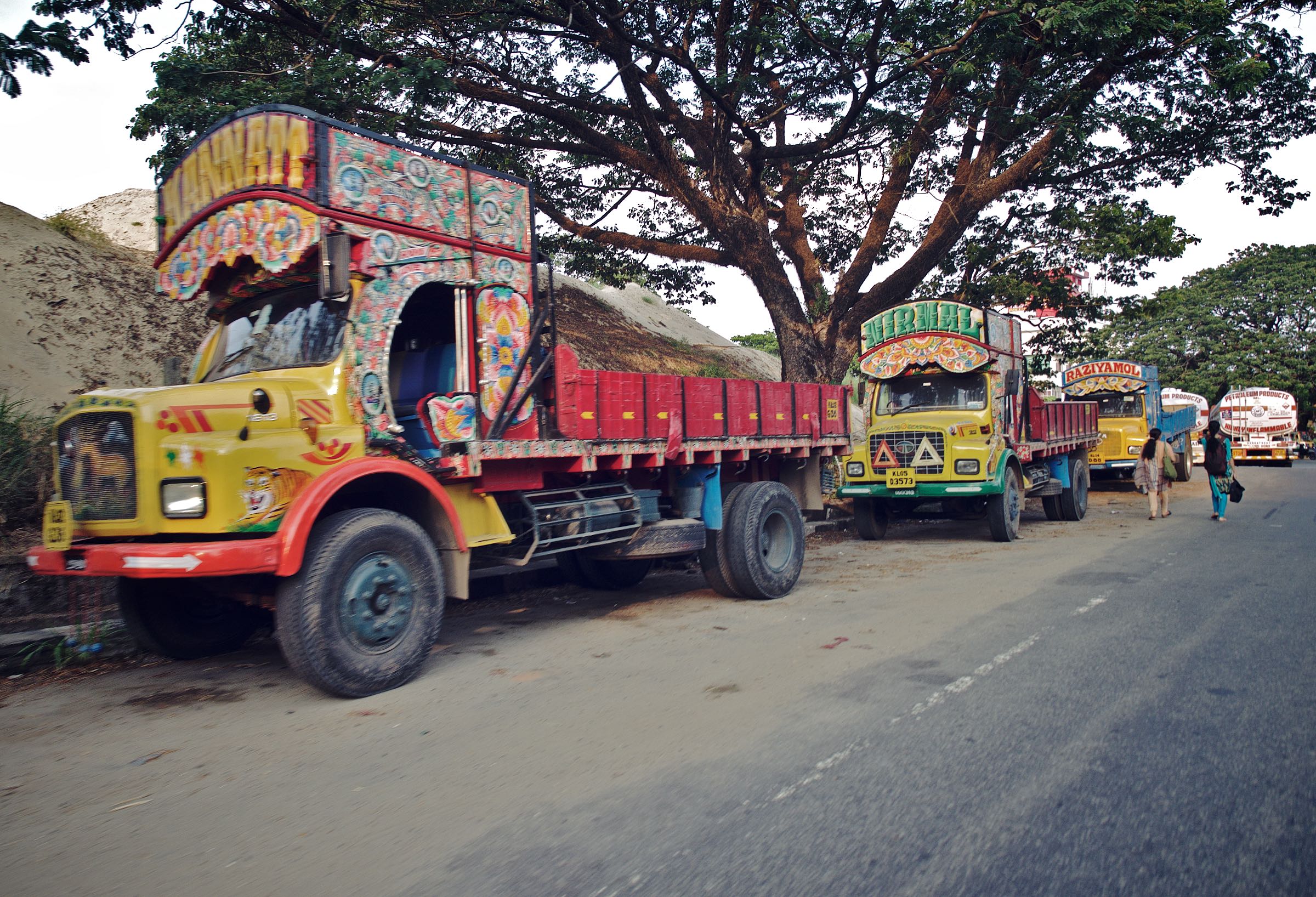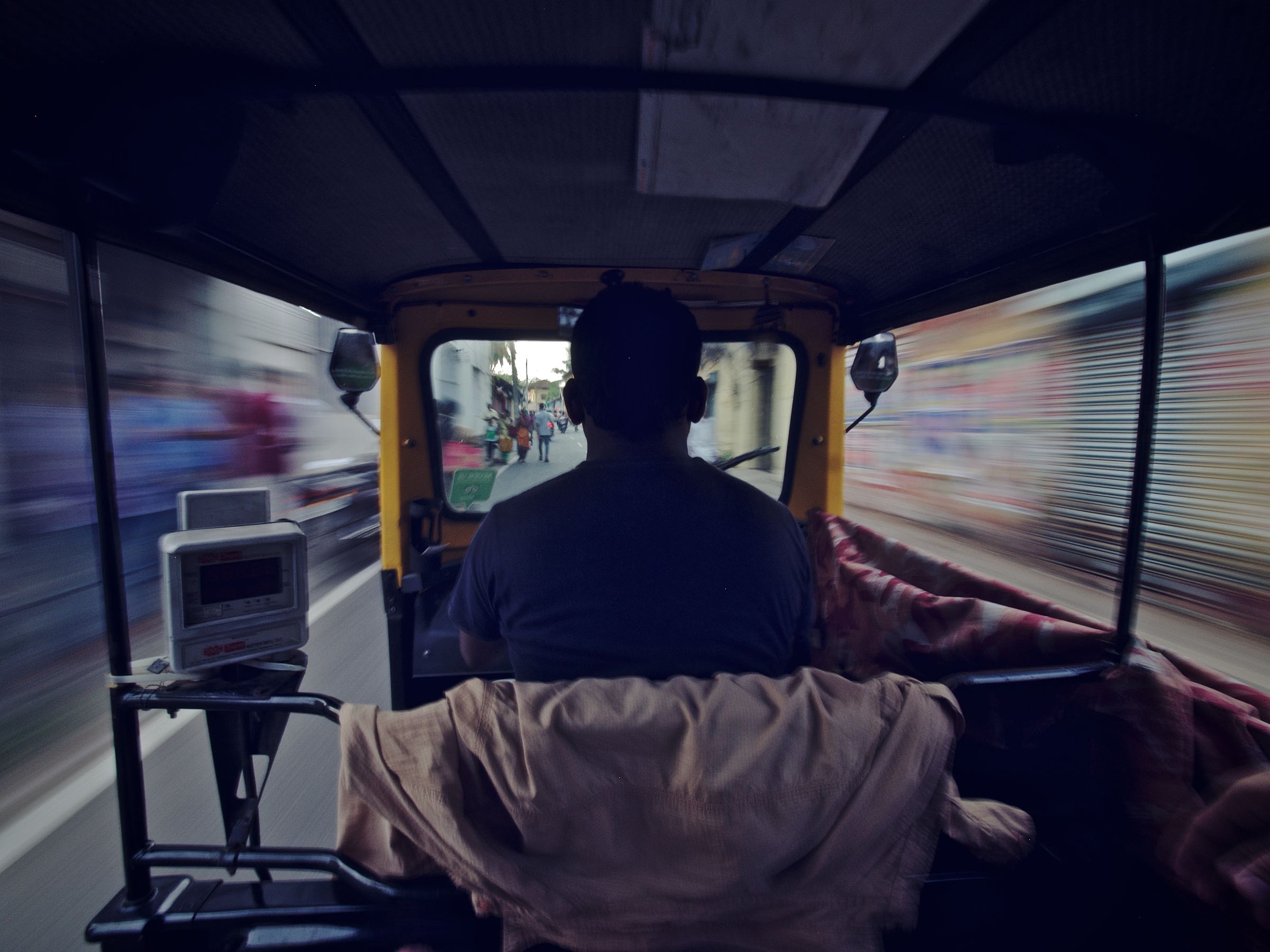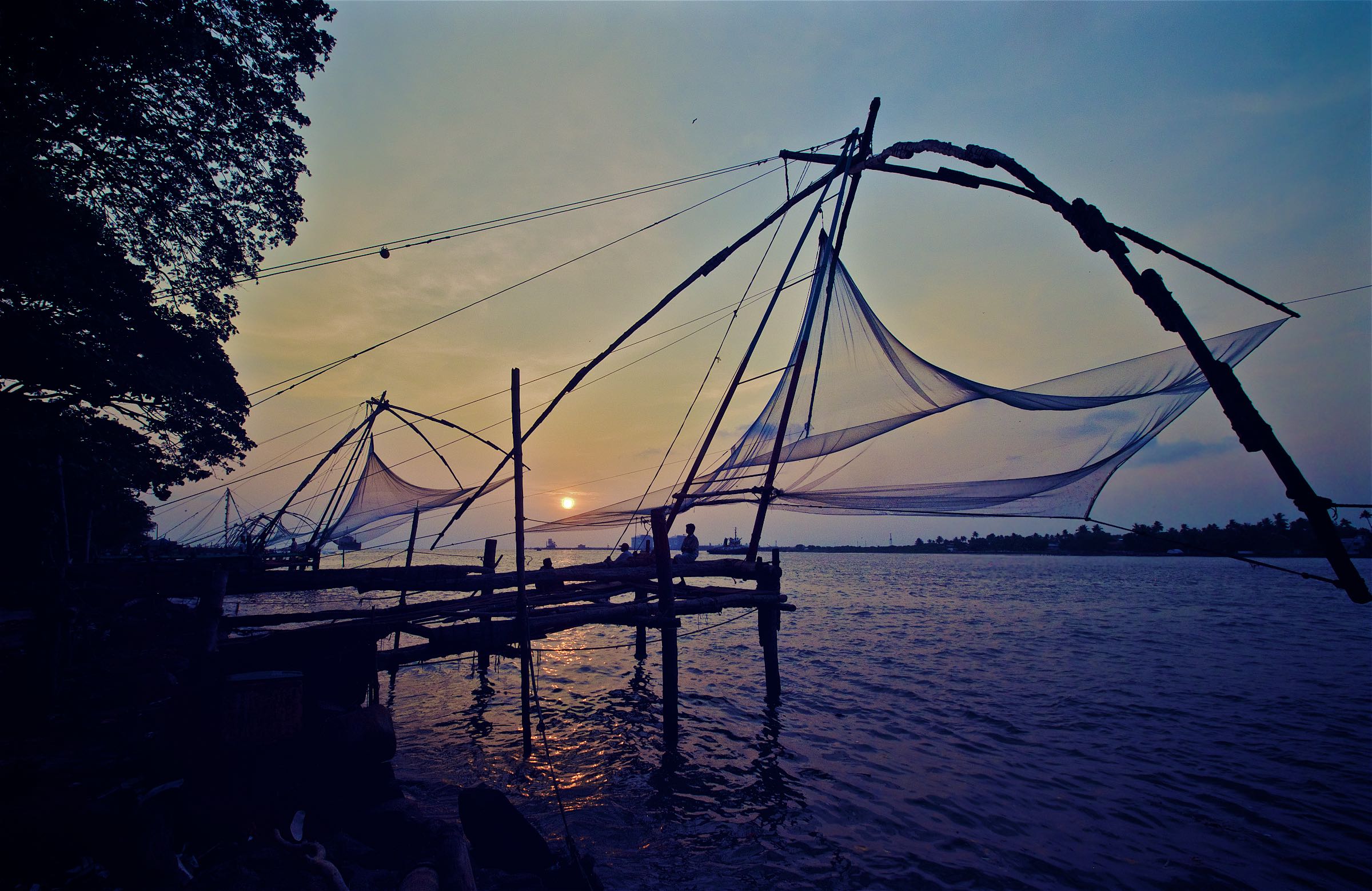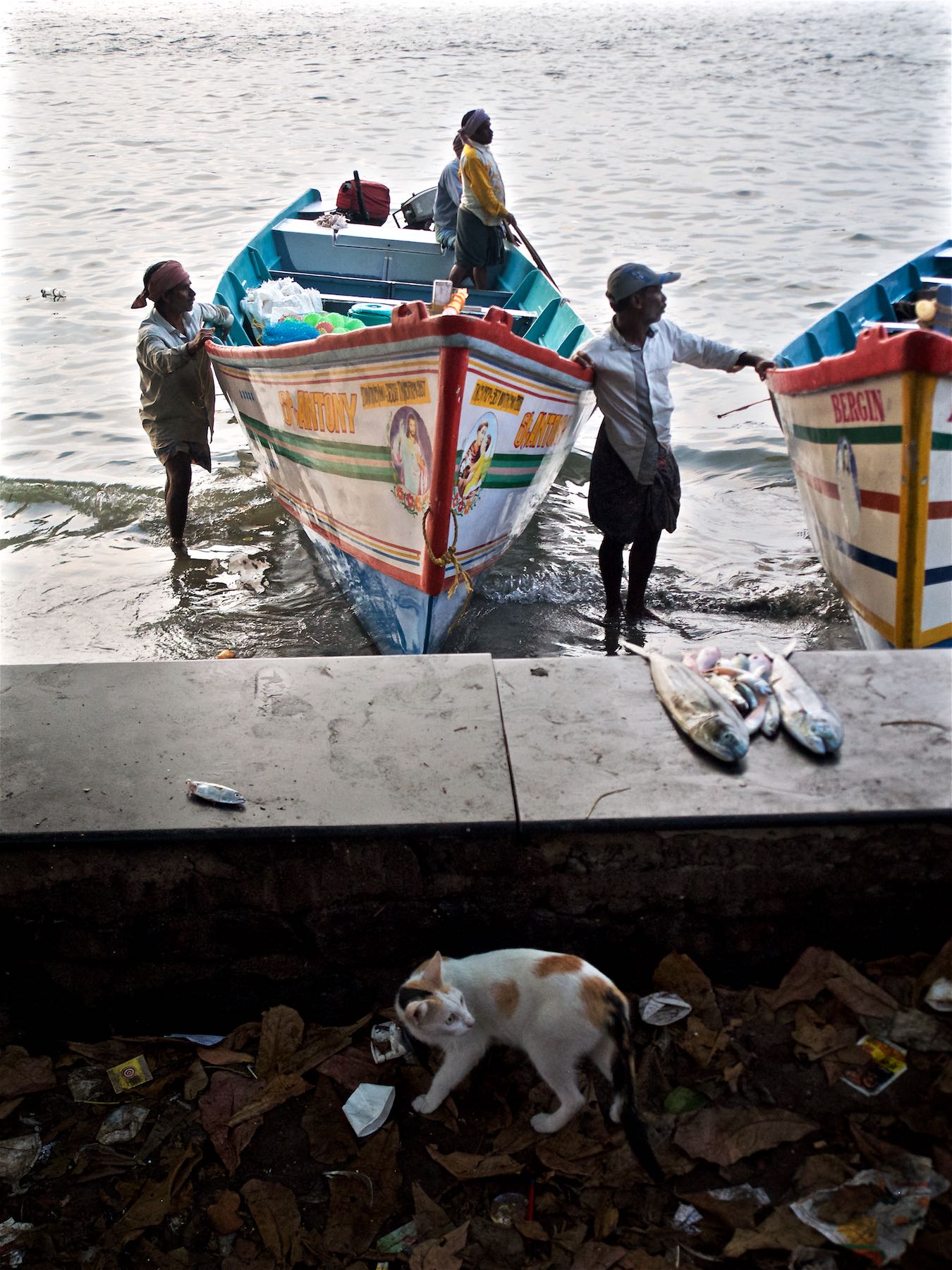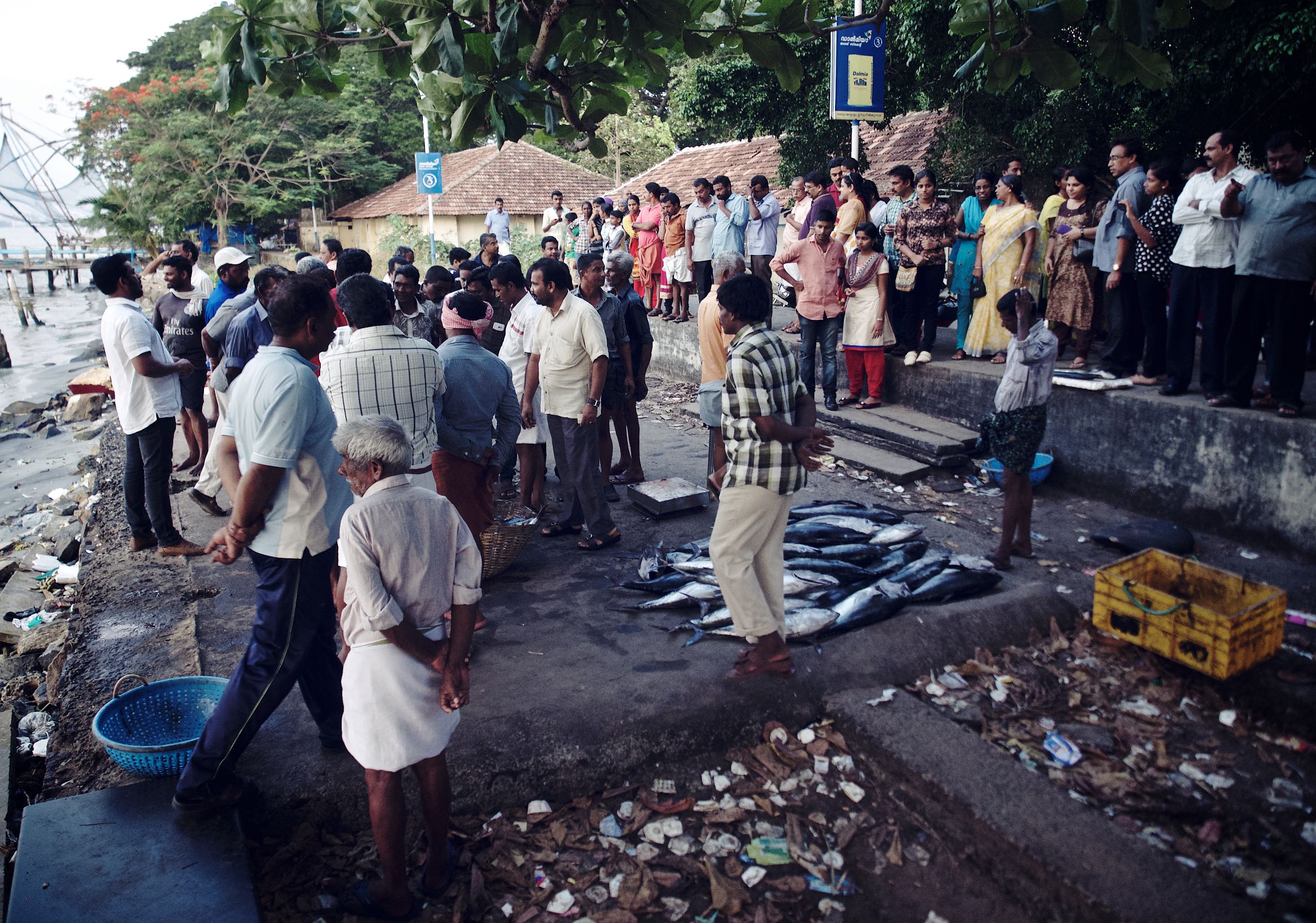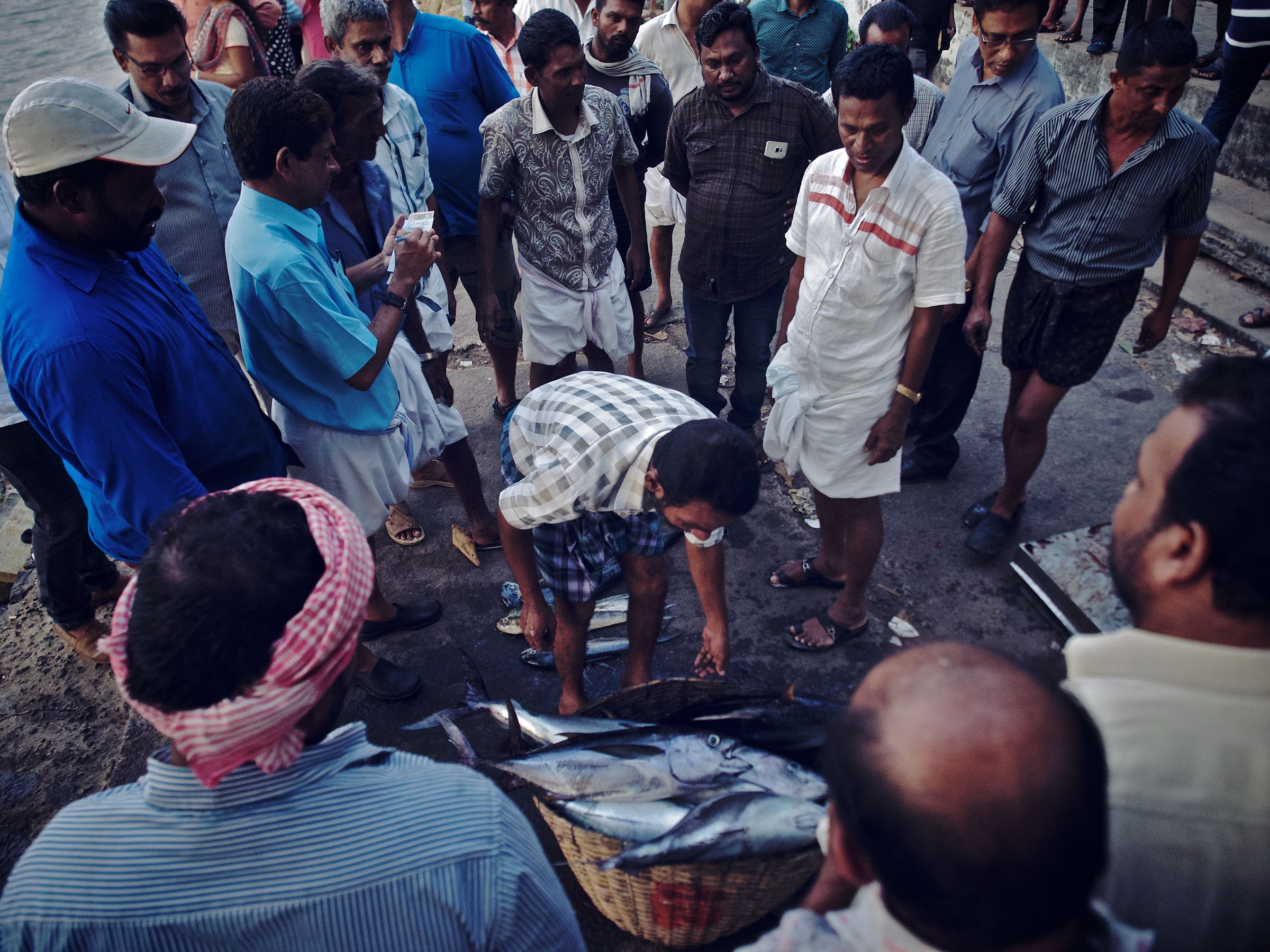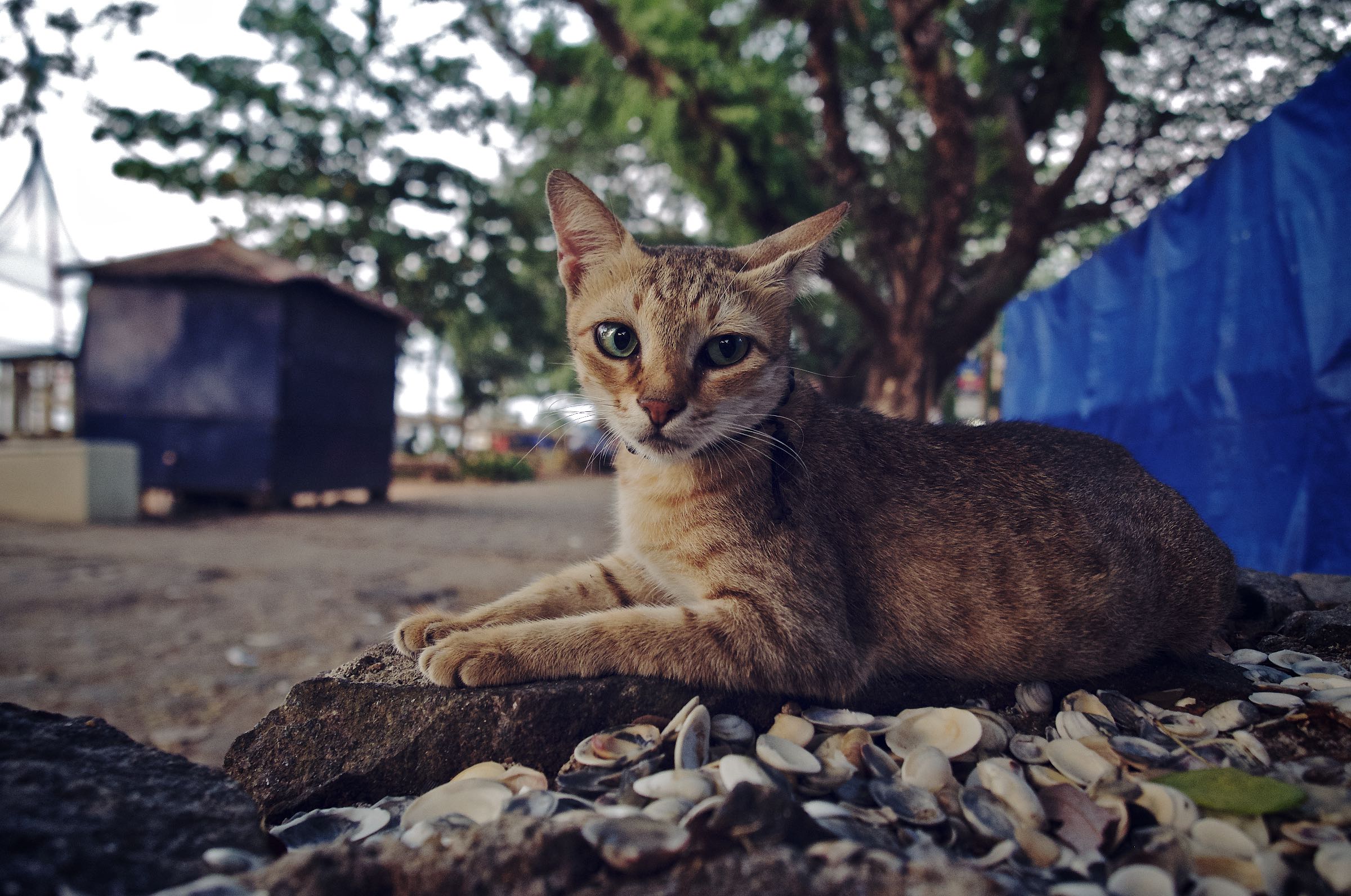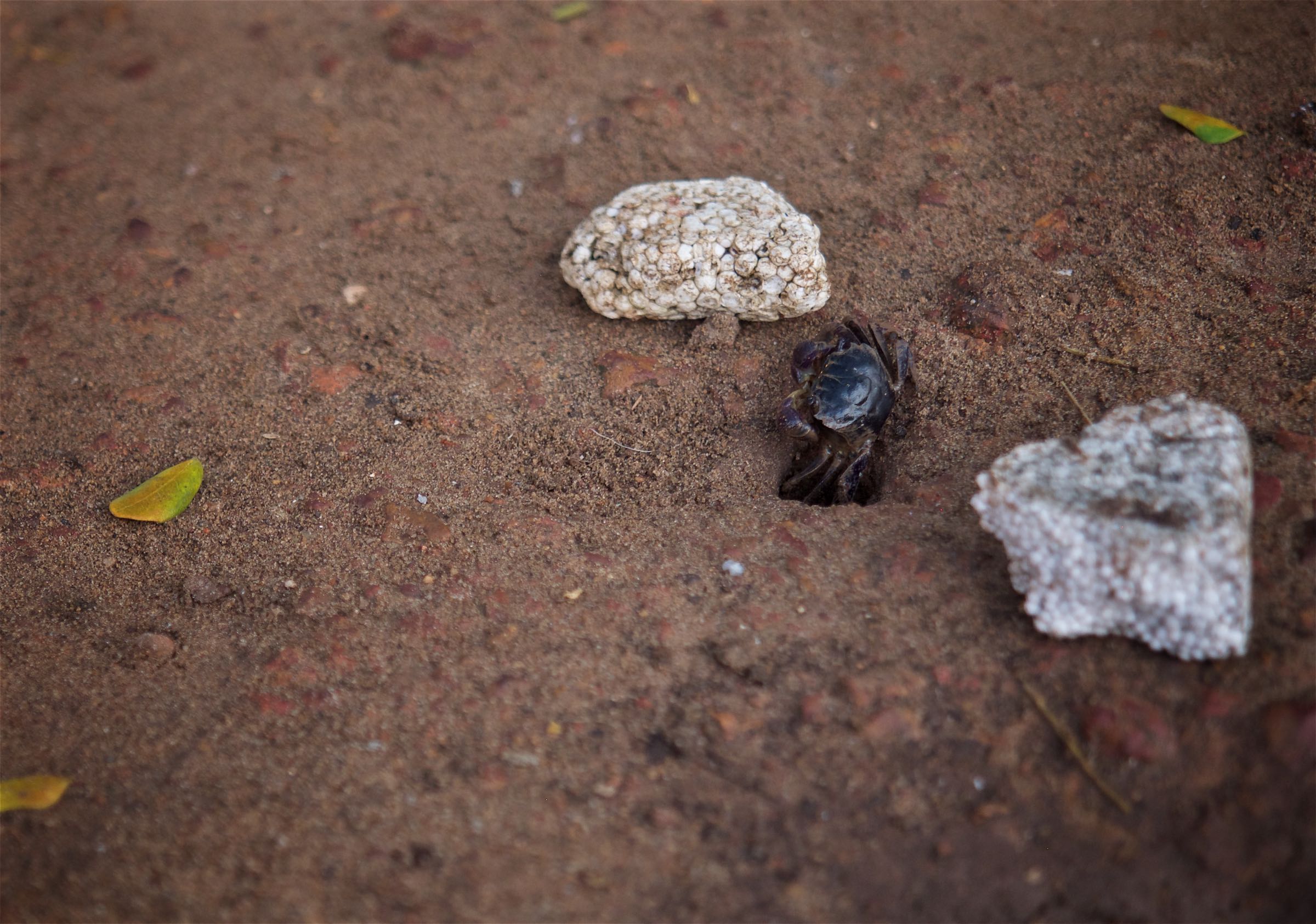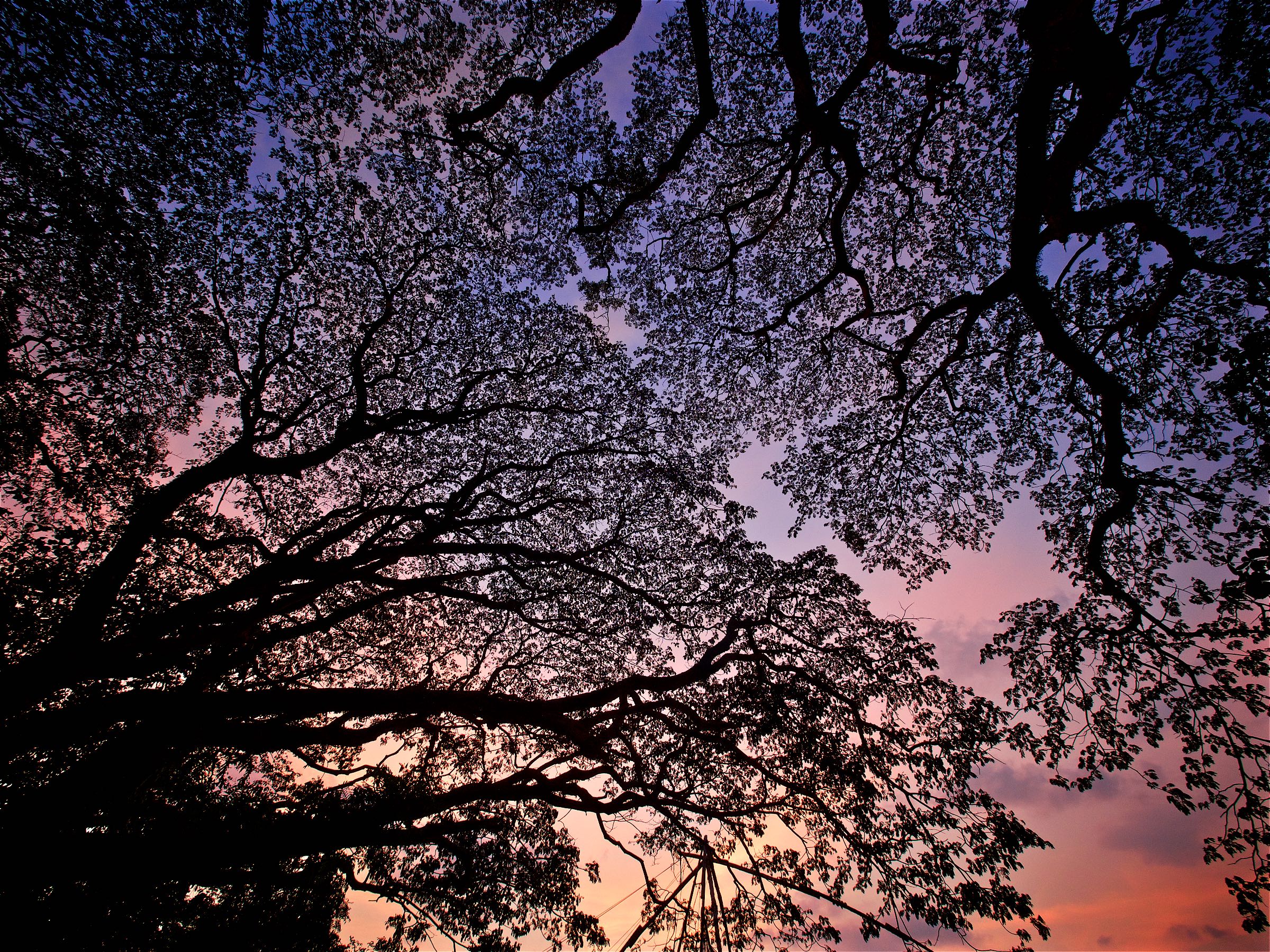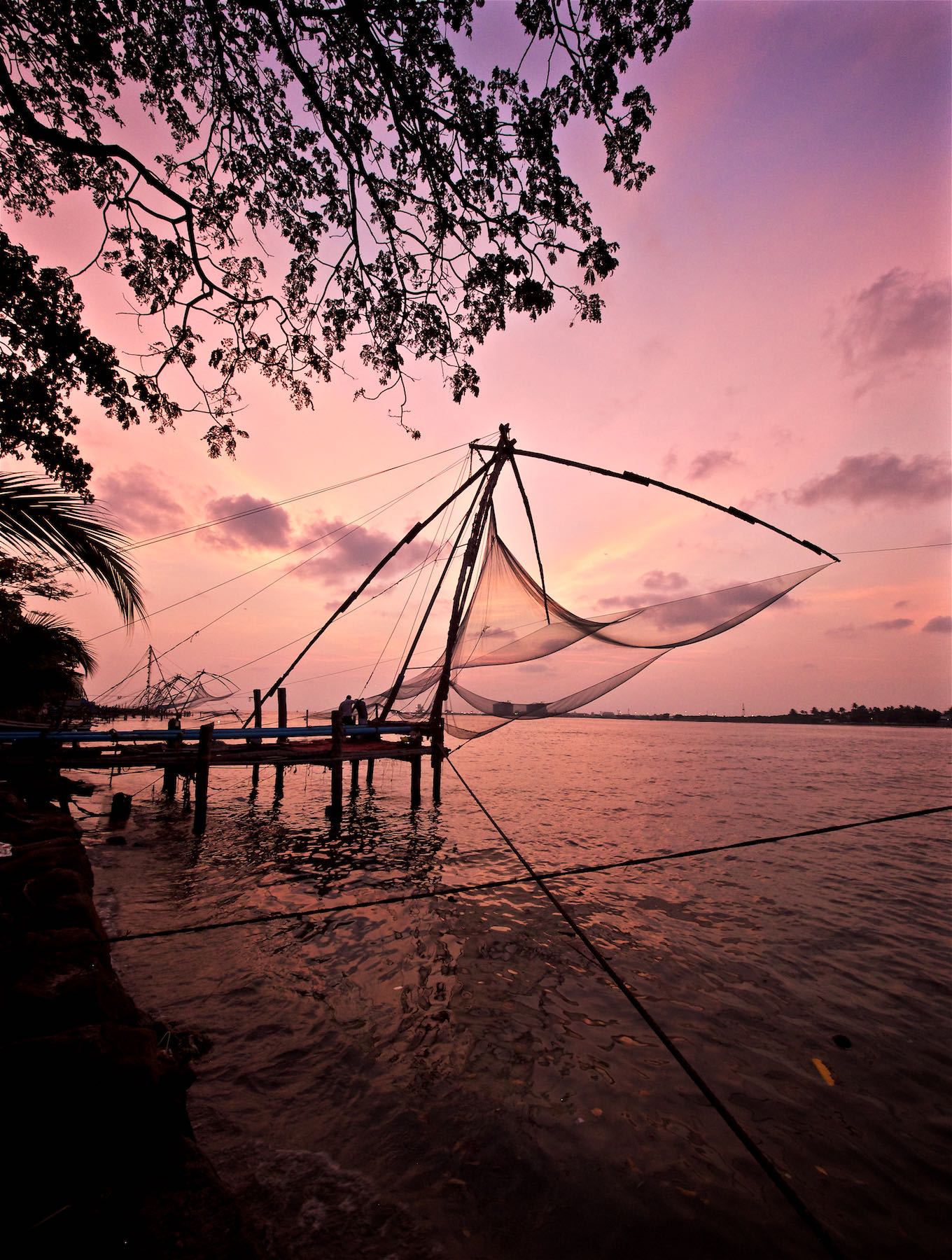The Ghost of the Mountain
In search for one of the most elusive cats on the planet in the mountain ranges of northern India - with some incredible sights.
In March 2023 I finally took a trip I had already planned previously, but our old spiked friend Covid-19 had a different idea at the time. The good thing is that on my next attempt I was able to combine my time in the mountain ranges of Ladakh with a few extra days in other parts of India - more on that in a future blog.
For today’s episode, the focus is on an area of the world’s most populous nation that in some ways is very different than the (already diverse) rest of the country: The union territory of Ladakh in the very north, bordering China and Pakistan, and sitting entirely above 2500m in the Himalayan and Kunlun mountain ranges. Why did I come here? To find the ghost of the mountain…
After a short flight from Delhi, my trip started in Leh, the historic capital of the ancient Kingdom of Ladakh at an elevation of 3500m. I spent two days here to acclimate, highly recommended to avoid altitude sickness before making your way further up into the mountain ranges up to 5000m.
The view over the river valley from our hotel, and the historical sites of Namgyal Tsemo Monastery and Tsemo Castle on the right side.
Influences
Tibetan influences are evident all around in the area, starting with its people (40% buddhist) and the temples. The region has a very distinct culture, which also includes a Ladakhi language spoken by almost half the population of around 300,000.
Leh was once an important trade route along the Indus Valley. Today it has become a tourist destination during the summer months, but the winter time (I visited in March) are generally very quiet.
First Sights
Our time to acclimate was cut short - on the day after arrival, we got a call in the morning that told us some spotters had seen a snow leopard about 1h drive away. When you hear this, you jump and get moving. While Ladakh is one of the best places in the world to see these elusive cats, it is believed they number around 300 at best, in an area of almost 60,000 sqkm - good luck! There’s a snow leopard in the photo on the left, and I guarantee you you’d never see it with your bare eyes alone.
Can you spot it?
Here’s a zoomed version of the panorama above, a small portion almost exactly in the middle. Look closely… hint, it’s lying flat in the lower centre of the photo.
And here’s the answer below. At a focal length of 1200mm, you can finally see this amazing creature sunbathing and yawning after its mid-morning nap. Scroll up again to see if you can make out where it is in the panoramic view from our viewpoint.
Snow leopards are mostly active around dawn and dusk, and exhibit many characteristic behaviors that we observe with the feline friends that live in our houses, such as the typical cleaning poses, scent rubbing, and yawning. They also cannot roar, but have been observed purring at times.
After about 3 hours of napping and cleaning, the snow leopard slowly made its way to the left, transversing the richly coloured mountain ranges, which were already free of snow in early March - that was gonna change a few days later at higher altitudes. If you scroll back up to the first panoramic image of this landscape, you’ll be able to make out where the cat was heading…
In the photos above, you can see the large tail, very thick due to its purpose as fat storage, and covered in a layer of fur, allowing snow leopards to use it as a blanket when asleep. Sleeping wasn’t on this individual’s mind anymore though. It was headed for three urial that has been peacefully eating on the slopes on the left, and was carefully approaching them, taking cover behind rocks and ridges from time to time. This is when we got excited - there was a definitive chance to see a hunt now, something that is almost never observed in the wild.
The Hunt
Things were in place. This photo features both the snow leopard approaching in hunting mode, and two urial, native wild sheep, not yet realizing the danger they are in.
Need some help finding either of the two parties? Take a look at these two images, zoomed in to the bottom left, and right, respectively.
The urial have been making their way down the cliff to feed on grass and bushes that grew between the cracks, while the snow leopard had managed to approach them from above without being seen - the whole process took almost an hour. After another few minutes of deliberation, the cat decided the moment had come and made its way down the slope.
One jump, and the three urial realized what was about to happen and scattered down the slope. For a split second the snow leopard wasn’t sure which one to follow, but once it had made its decision, there was no going back.
At this point, the speed at which everything happened and the athleticism of both animals as they raced down the cliff was completely overwhelming - I thought I was prepared to get the shots I was hoping for, but things happened way faster, in a much wider field of view, and a darker environment than I had anticipated, making my photos mediocre at best. This might be the topic of another blog post or a talk some day, as I learnt quite a few lessons for situations like this, even though I had been photographing a lot of action-packed wildlife before. For those interested in the photographic details, in short, shifting away from continuous autofocus, sticking to a very long focal length at the expense of light, and getting greedy with shutter speed, are all mistakes to avoid.
Dramatic
Here’s an iPhone video of the hunt taken by one of the spotters (and copyright and credit to him) next to me almost from start to finish. It doesn’t do justice to the steepness of this cliff, which was the reason the urial ended up stumbling and falling to its death into the canyon road that passes below (where we drove a few hours earlier).
The hunt ended with the snow leopard killing the urial with a bite at its neck, and the cat dragged the large sheep a few meters back up the cliff.
Pose of Success
This was also the closest we had come to the animal, still at least 500m away I’d say but enough to see the beautiful details of this incredible cat.
Post-Hunt Rest
With the kill a few dozen meters below, the snow leopard retreated under a huge outcrop to rest a bit, observing its surroundings and probably waiting for darkness to creep in before it would go back to eat - we left it alone at this point.
Despite the excitement of having witnessed this incredible sight, for the next days (and even while writing this 9 months later) I couldn’t quite shake the little disappointing voice in the back of my head telling me I had missed some once in a lifetime photos. Once in a lifetime sounds a bit dramatic, you say?
Our main spotter, who worked for the BBC and other wildlife documentaries being filmed in the region, told us he had not once seen a hunt from start to finish in his 15 year career. With this perspective in mind, the fact I got lucky enough to experience it at all started to overshadow the lack of a perfect photo.
Ulley
It’s difficult to deny that we had already witnesses the highlight of the week here as we made our way from Leh further into the mountains on Day 3. The destination was the small village of Ulley, a group of around 10 houses in a valley at over 4000 meters, which offers a cozy small lodge as a home base for people looking to get a glimpse at the ghost of the mountain. On the way, we passed the confluence of the Indus and Zanskar rivers, seen above.
Likir Monastery
Another highlight as we moved along the dirt roads was this monastery built in the 14th century and, according to Buddhist mythology, the first construction by the Tibetan monks.
Historical Evidence
Petroglyps that have been found around the region, such as here in a small collection along the Indus River, are over 5000 years old. Ladakh has been populated since the Neolithic times.
Once we arrived in Ulley, these were the views into the valley we got to enjoy from the observation area at the lodge. The spotters set up their scopes and binoculars here each morning to look for animals roaming on the slopes.
Ghost Spotting
The spotting crew is what makes it possible to see snow leopards - or really any animals at all - in this area. Their experience and skill at observing the surrounding mountain ridges is incredible to observe. Most of the spotters here have been working in this field for over 10 years and often support film crews for wildlife documentaries or researchers. Some of them have installed their own camera traps to help document the animals in the region.
(I believe) a Himalayan vulture and a bearded vulture - one of the various birds we found in this area, alongside snowcocks and partridges.
The Return of Winter
Winter had arrived after a few days, and the valley was suddenly covered in snow and fog. While March signals the end of the very cold season, occasional snowfall happens until April.
Those conditions weren’t the best for spotting animals, but they were even worse for some local workers and their families, who were hired by the government to improve road access to the village. Their tents suffered from the weight of the snow, and heating (using dried cow dung) became essential.
Day to day life was impacted as well - it becomes difficult to dry your laundry when it freezes in the snow instead. During the winter months, there is no running water in the village, and availability of electricity is temporary at best.
A small collection of buddhist chorten, a type of stupa, at the top of the mountain road, serving as depositories for Buddha relics.
400 Years
Is the age of this local house, which we saw while exploring the valley above the lodge on foot. The couple who lives here are the parents of one of the girls working in the lodge, and they kindly invited us for tea. A beautiful way to warm up - it was -15C outside. The cat had to do the same, can you spot it in the photos below?
Seeing the interior of the structure and the many artifacts that have been in use here for centuries was really interesting: Pots that have been passed down generations, skillfully brewed local Kahwa tea, and the traditional wedding belt worn by the couple’s daughter.
Couple in the Snow
I don’t often take portraits, but sometimes moments present themselves where you can capture an unfiltered natural scene. One of my favorite photos from the trip.
Nightfall
The stars rising over the mountain ranges and the weather cleared up.
Exploring
Prayer flags are commonly seen in this area when driving from village to village, as we did the next day. They’re, meant to bless the surrounding countryside and usually come in five colors: blue for the sky, white for air, red for fire, green for water and yellow for earth.
Yak Cow Mix
It’s rare to see wild yaks in the area, but the domestic cow type mix is commonly seen.
On the Lookout
Regular stopping and scanning while traversing the mountain roads along the many cliffs and valleys is the way to see animals here.
Aside from the elusive snow leopards, the mountain ranges of Ladakh are home to other fascinating animals that adapted to the harsh and cold environment, such as the vulnerable Urial, with only 1500 of the Ladakhi subspecies left.
As well as Ibex, such as this female looking for food under a large boulder and the group of males on the right.
Another highlight of Ladakh that is rare to see can be found in the photo above. In fact, there are at least seven of them. Take a close look…🐺 Himalayan wolf are an endangered species generally found above 4000m, with just a few hundred individuals usually moving in packs of a dozen or more individuals. We had the chance to see a distant pack quickly moving along through the rocky landscapes for a few minutes.
A Day of Sightings
As the weather cleared up and the half moon rose over the Himalayan mountain ranges, our second snow leopard sighting for the week happened to occur in the valley of the village, just a very short drive away.
That drive however was followed by a hike through a nearby canyon - which at 4000m elevation with a dropping blood oxygen and a lot of equipment becomes a bit tougher than normally. In the end, this sighting showed us some remains of a previous meal the cat enjoyed, and a very brief distant glimpse of a snow leopard’s head at the ridge after waiting for several hours. That’s a much more common snow leopard expedition sight - can’t always expect a hunt!
Sighting 3
On a late afternoon on the same day we got another call - a snow leopard was sighted not too far from one of the roads through the local villages. Our guides made the call to give up on the lazy cat on the ridge, and go for this one instead. A good decision.
While still relatively far if you are used to African safaris (which are nothing like this), it was probably the closest sighting we had. And what a beautiful individual, with a big furry head, showing us its teeth as well.
Snow leopards are generally solitary, with each individual occupying a home range of over 100 square km with little overlap. There are less than 10,000 estimated to remain in the wild, with almost half of them in China alone. The rest is spread over the mountain regions of Central Asia, from northern Mongolia down to the Himalayas and westwards to Afghanistan. In Ladakh, they are the state animal.
Tired Eyes
After that day, our spotters deserved some rest time, that’s for sure.
In Movement
A few clips of the sightings we had during the week - overall, with a total of 3 snow leopard encounters plus ibex, urial, and a pack of wolf, it was definitely an above average week (let alone seeing a hunt!).
On the last day we visited another local village residence a little bit higher up on the cliff. The main house was built using traditional methods, where the animals are kept on the lowest floor to provide natural heating for the first floor above, where the family lived.
The animal enclosure has been expanded to a separate house with a netted roof to avoid predators.
The interior features a similar style as the previous house we visited, with the typical oven and pots, a traditional oven for heating, and centuries-old wooden beams supporting the upper floor.
Women of the Family
A feature of Ladakhi society that distinguishes it is the high status and relative emancipation enjoyed by women, compared to other rural parts of India.
Former Days
Another interesting house in the village was this former local school, which was closed down recently. The few children that live here now head to a nearby village instead. Many of the family members work or study in Leh or elsewhere during the winter, but come back to their villages in the summer.
Monastery of Alchi
As our time in Ulley came to an end, we stopped at this 1000-year-old monastery on our way back to Leh, featuring 1000s of prayer wheels (which you should always turn clockwise for good luck!)
Kind people all around, incredible mountain ranges, and the most amazing cats in the world. Ladakh was a special and unexpected side of India. And that was it before heading back to Delhi - more on that soon!
Snow Leopard Land
Subscribe to my newsletter to get notified and don’t miss out on more Wonders of the Globe.
Other Recent Posts:
Kerala, India - Three Days of Bliss
Had the opportunity to take a three date trip to Fort Kochi, Kerala in India last week. Absolutely worth it, amazing combination of nature, urbanity and relaxation.
Had the opportunity to take a three day trip to Fort Kochi, Kerala in India last week. Absolutely worth it, amazing combination of nature, urbanity and relaxation.




